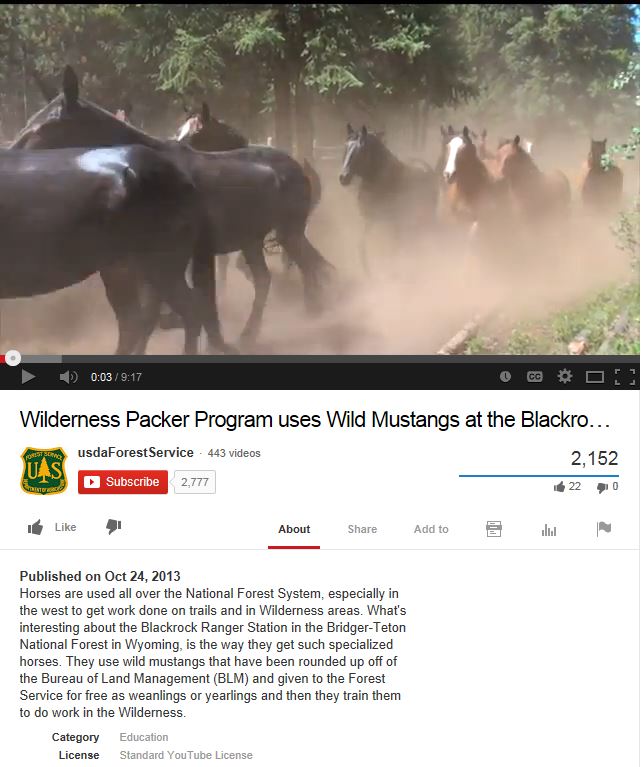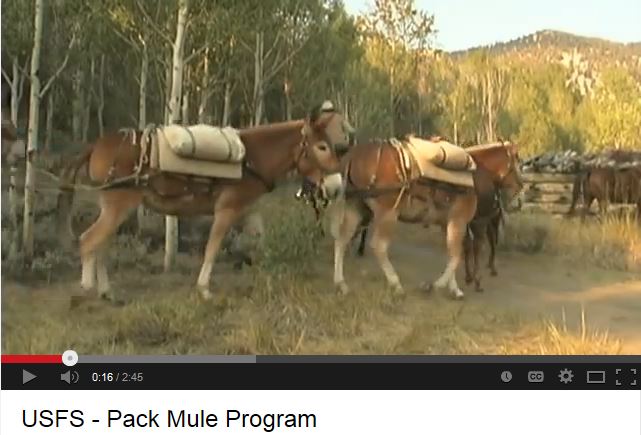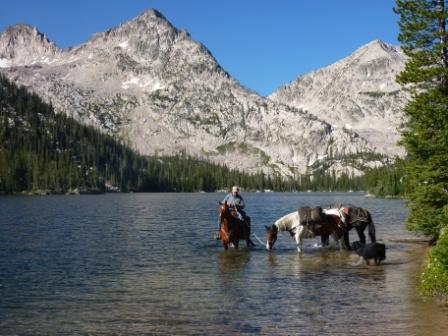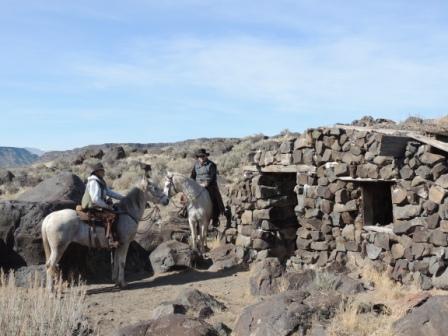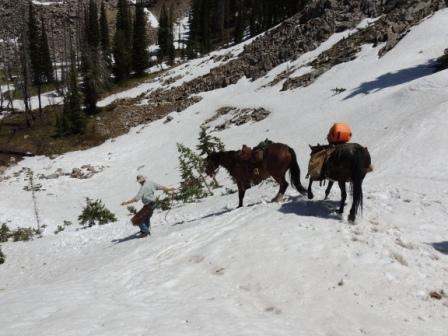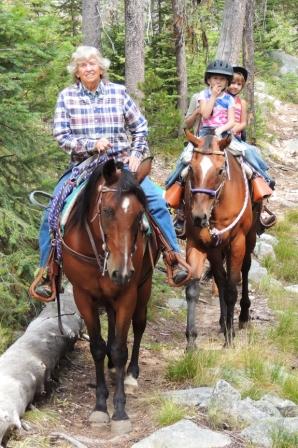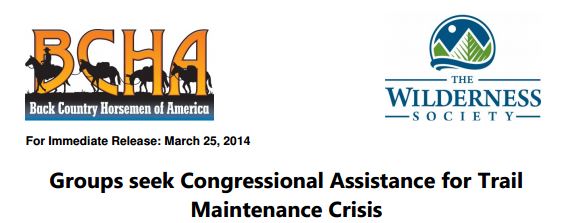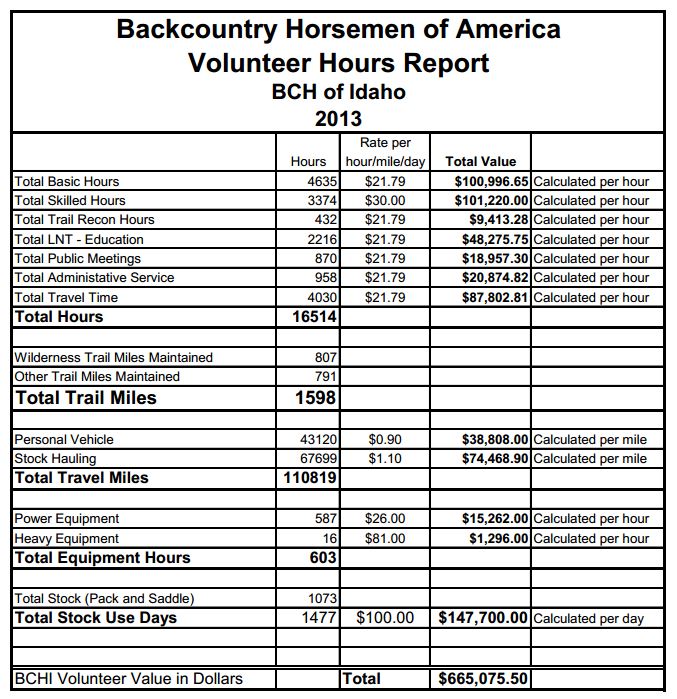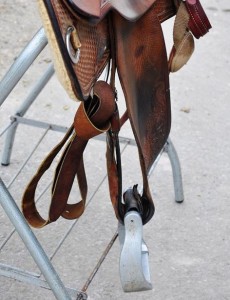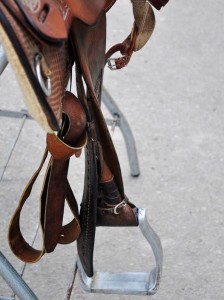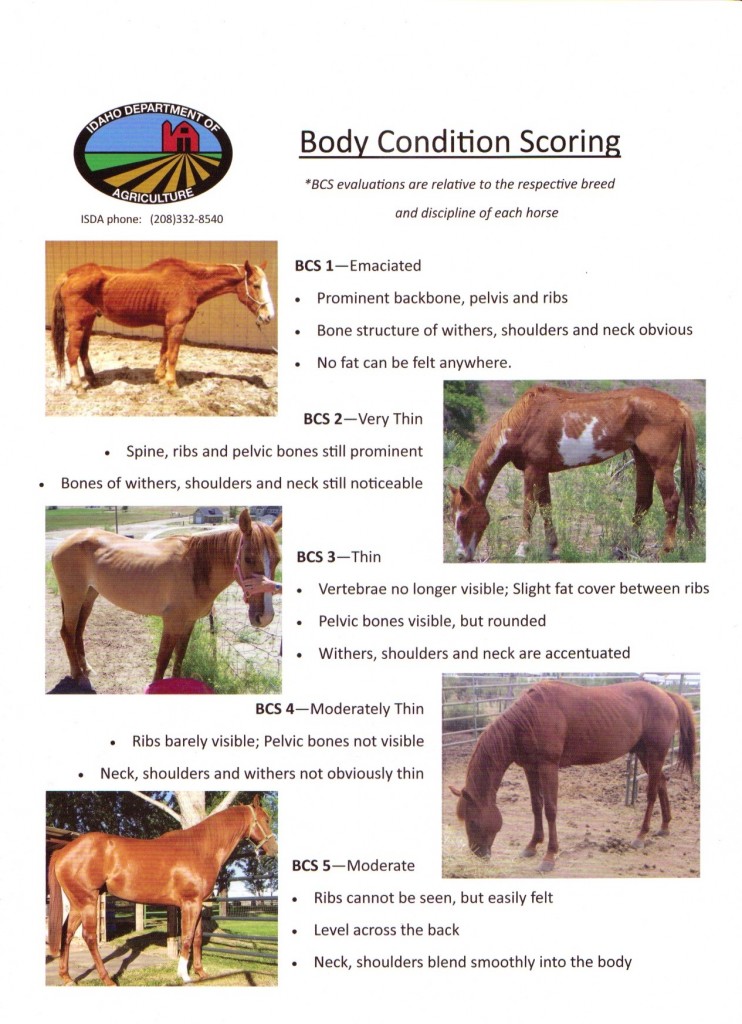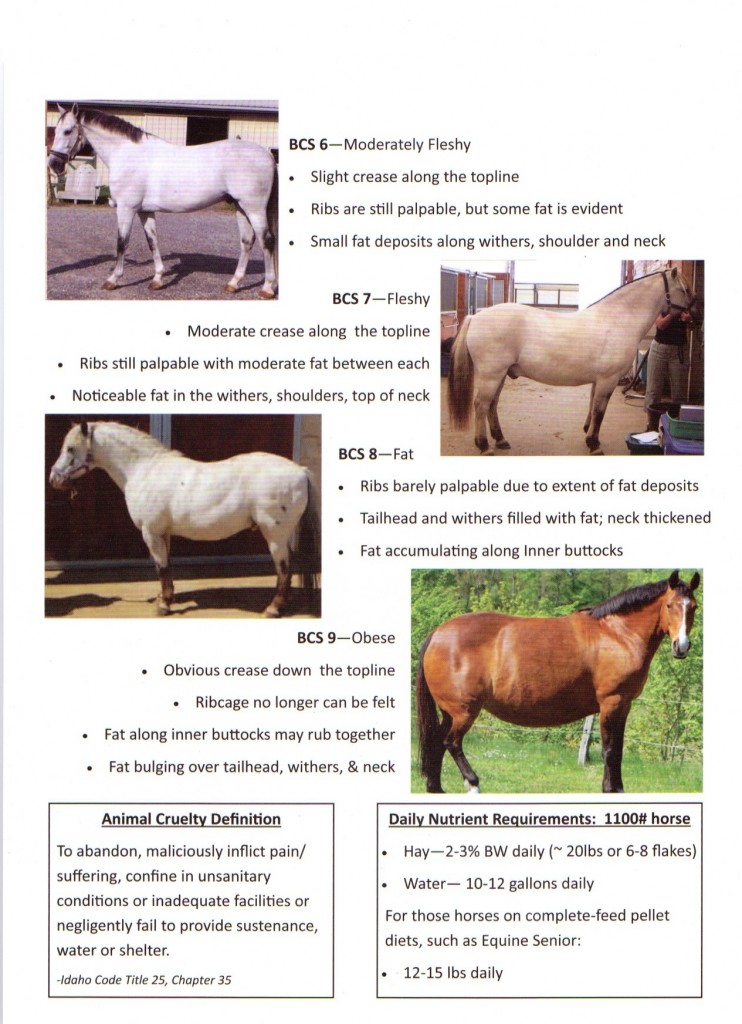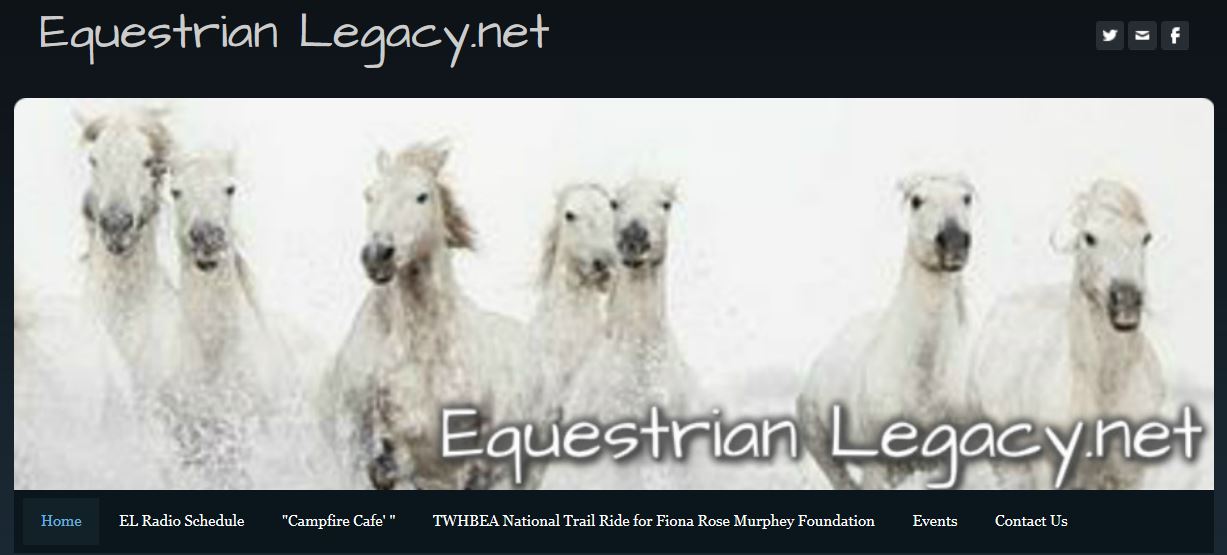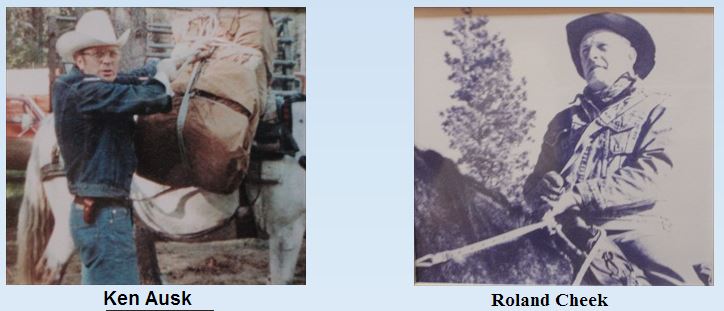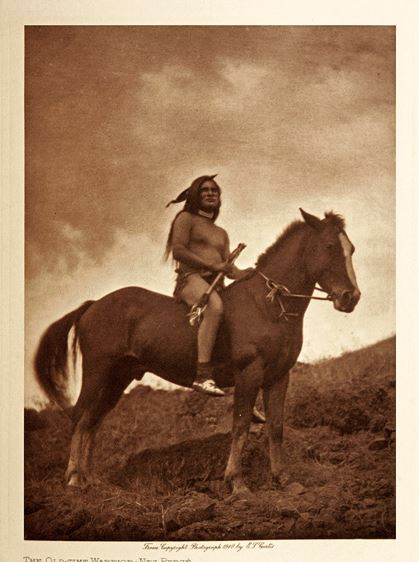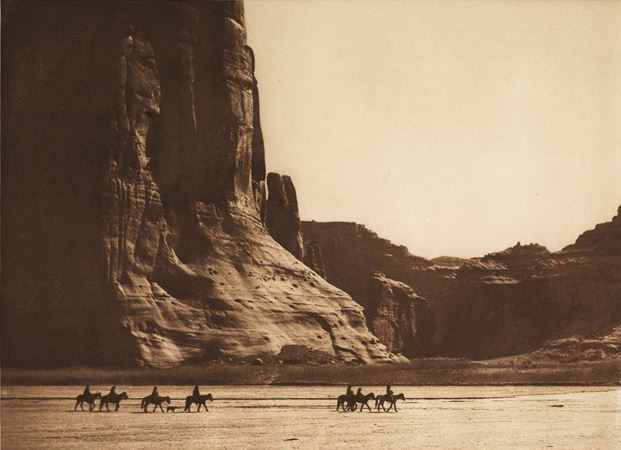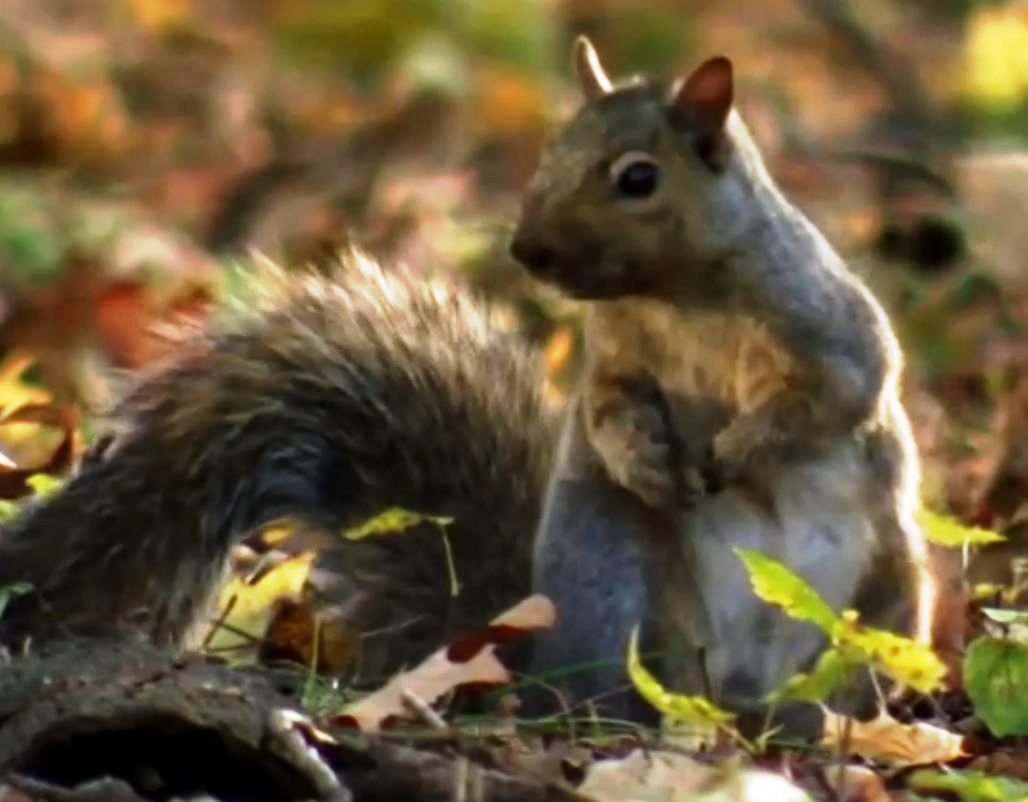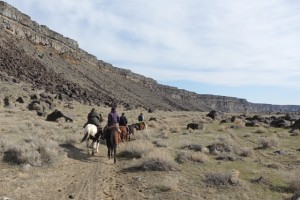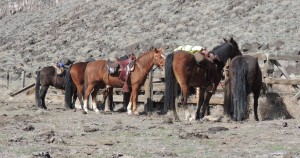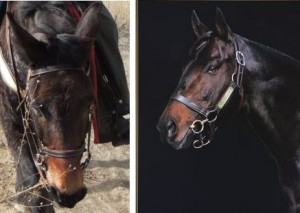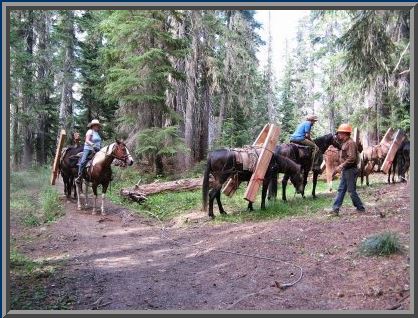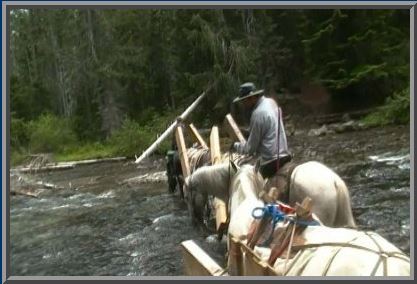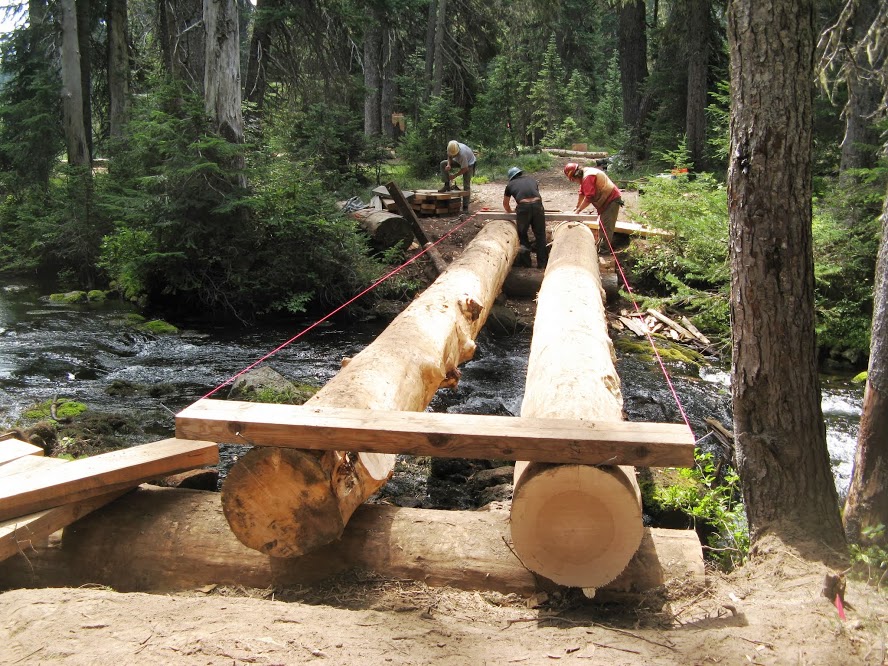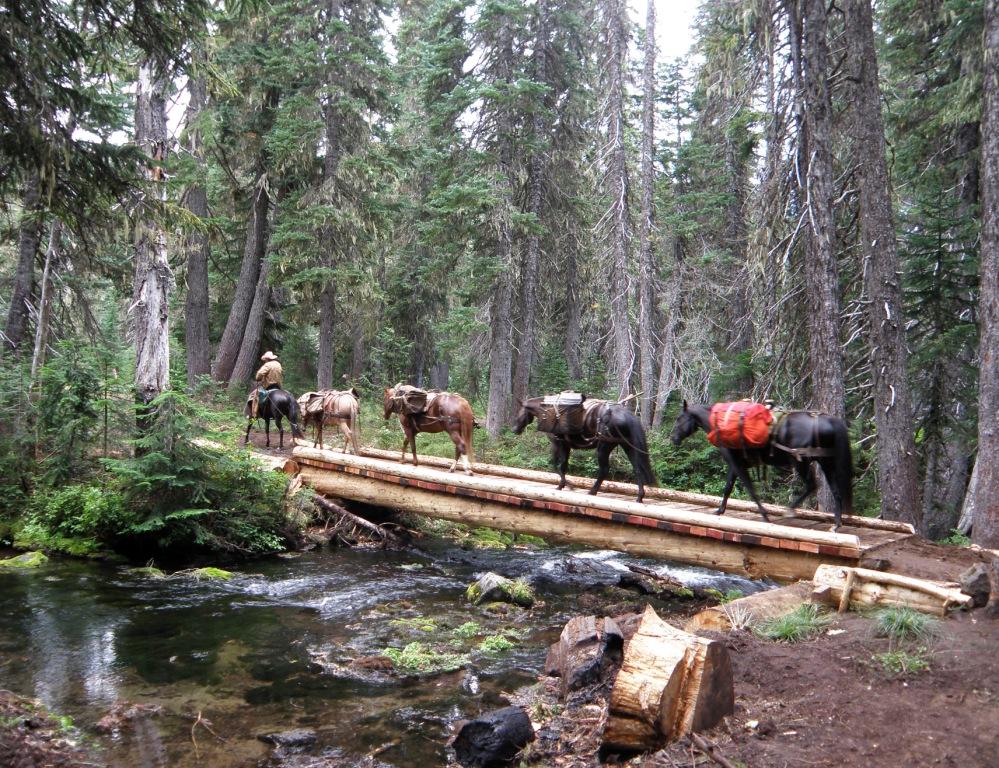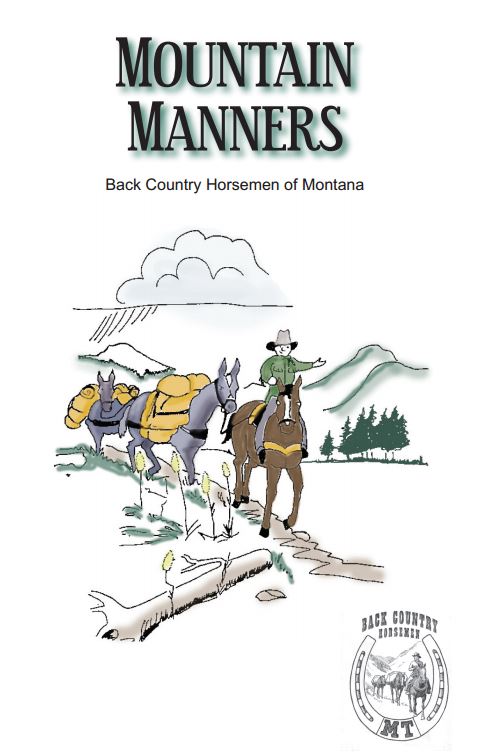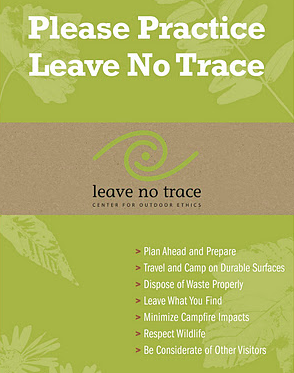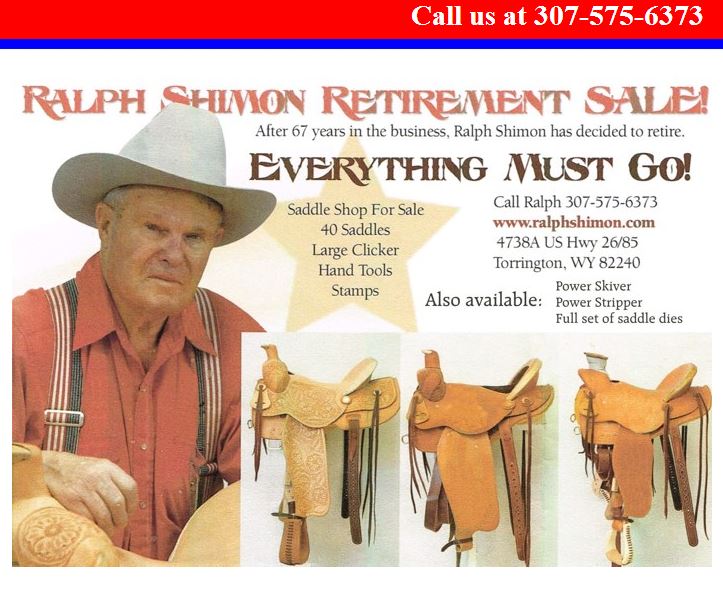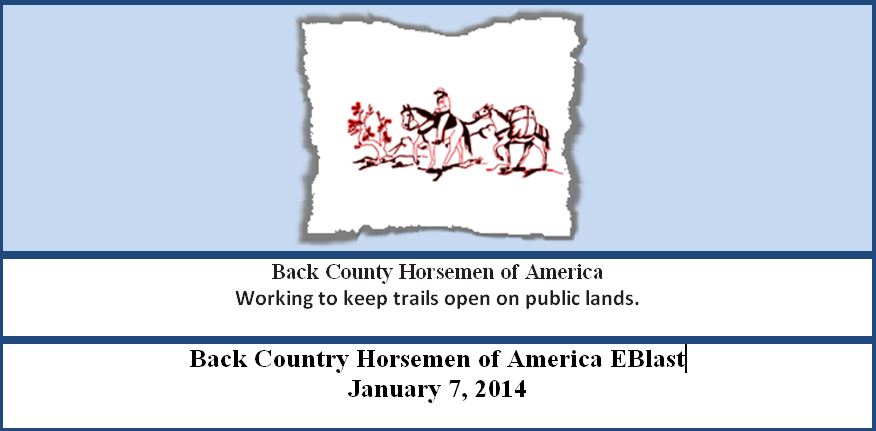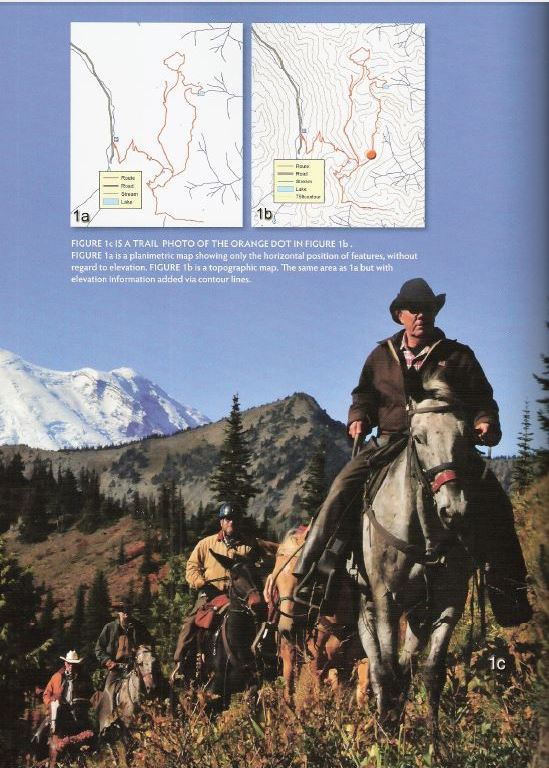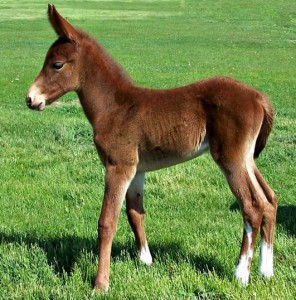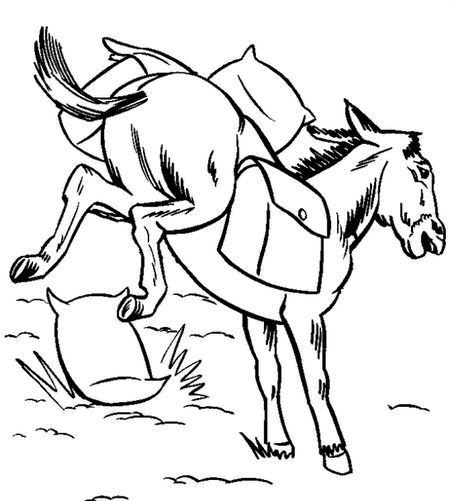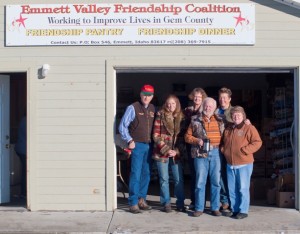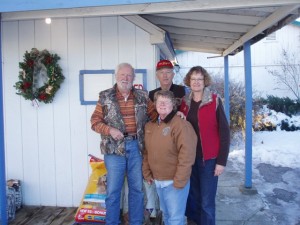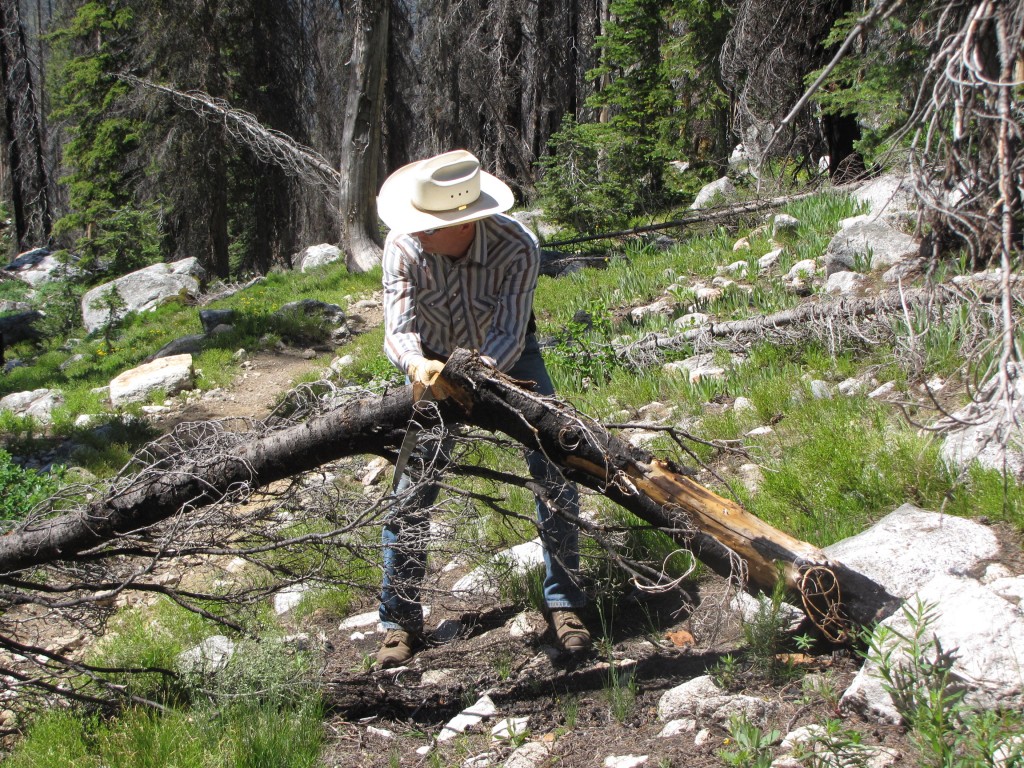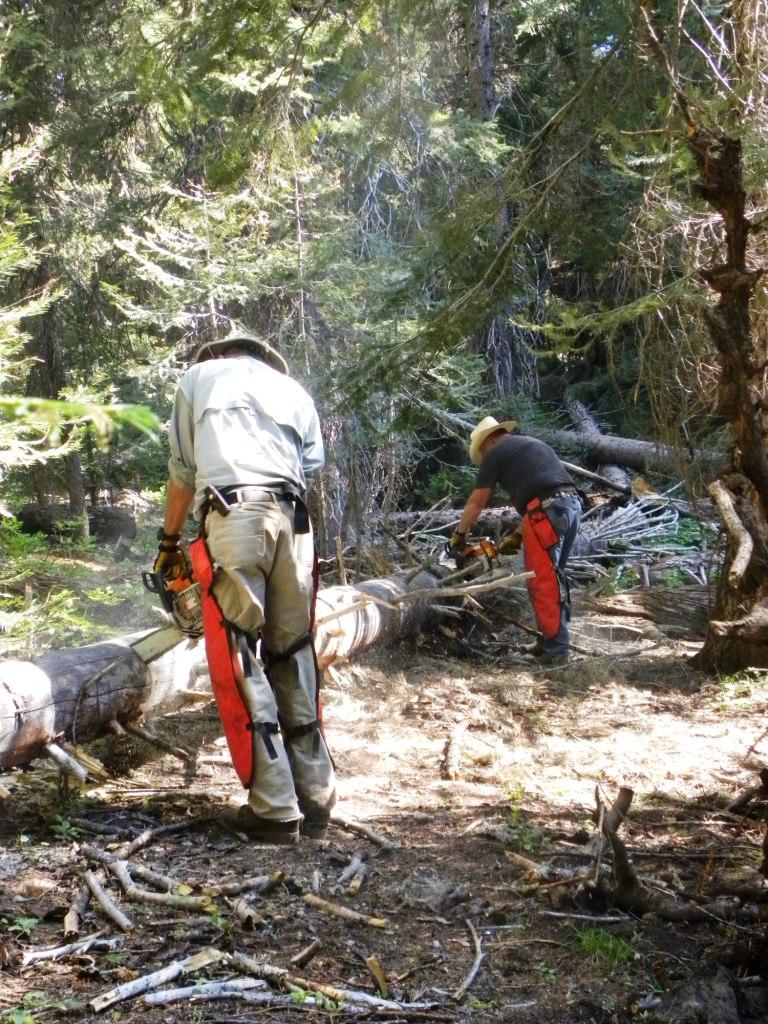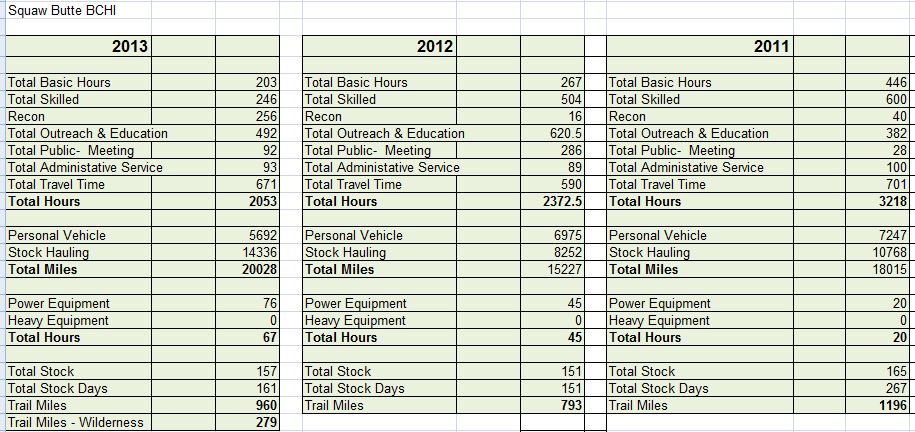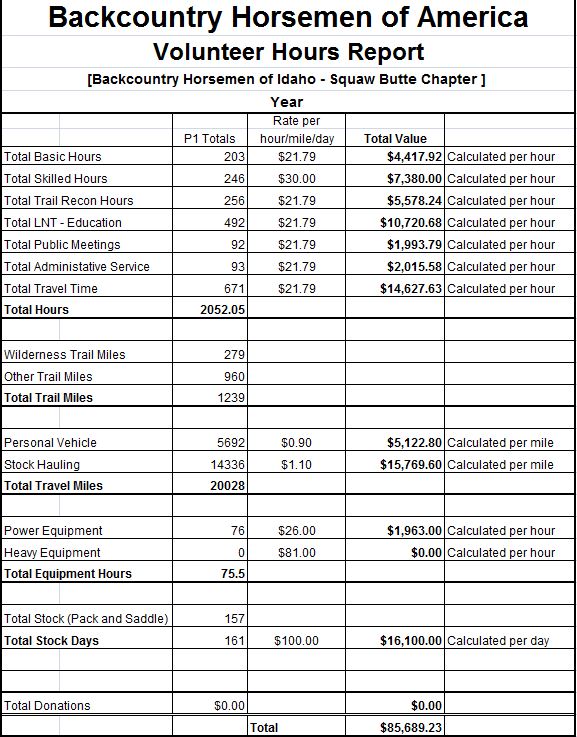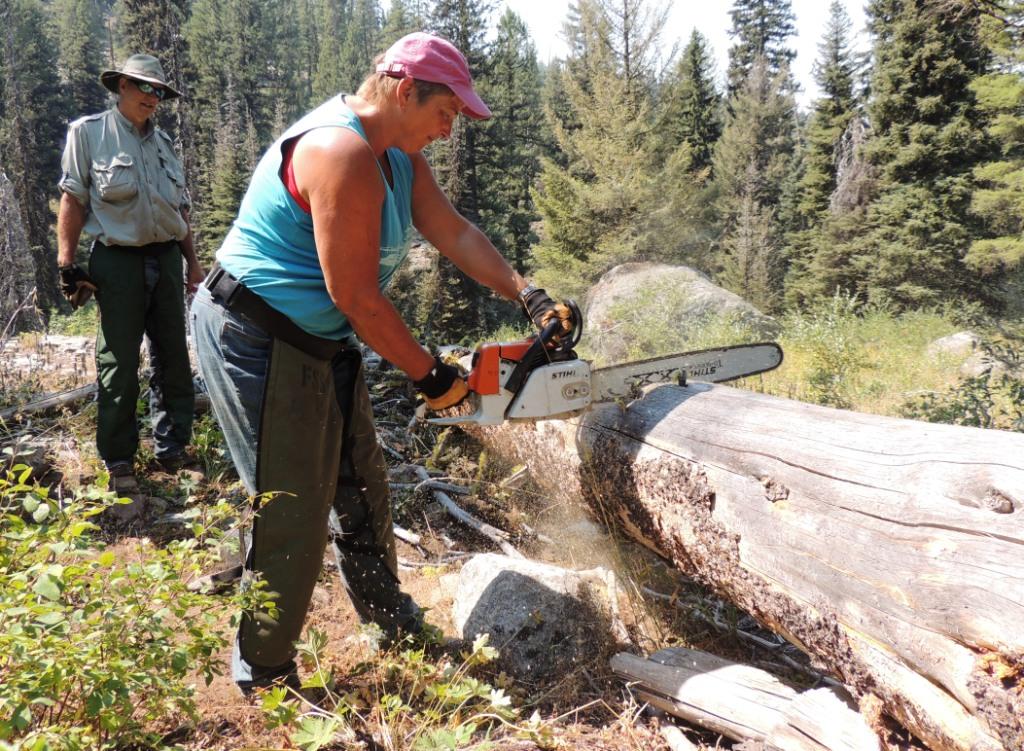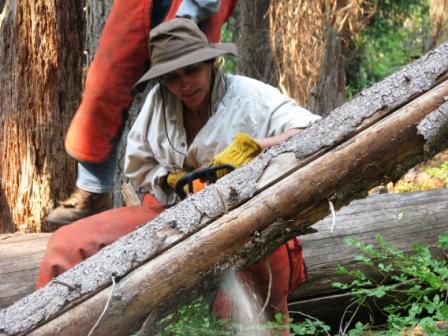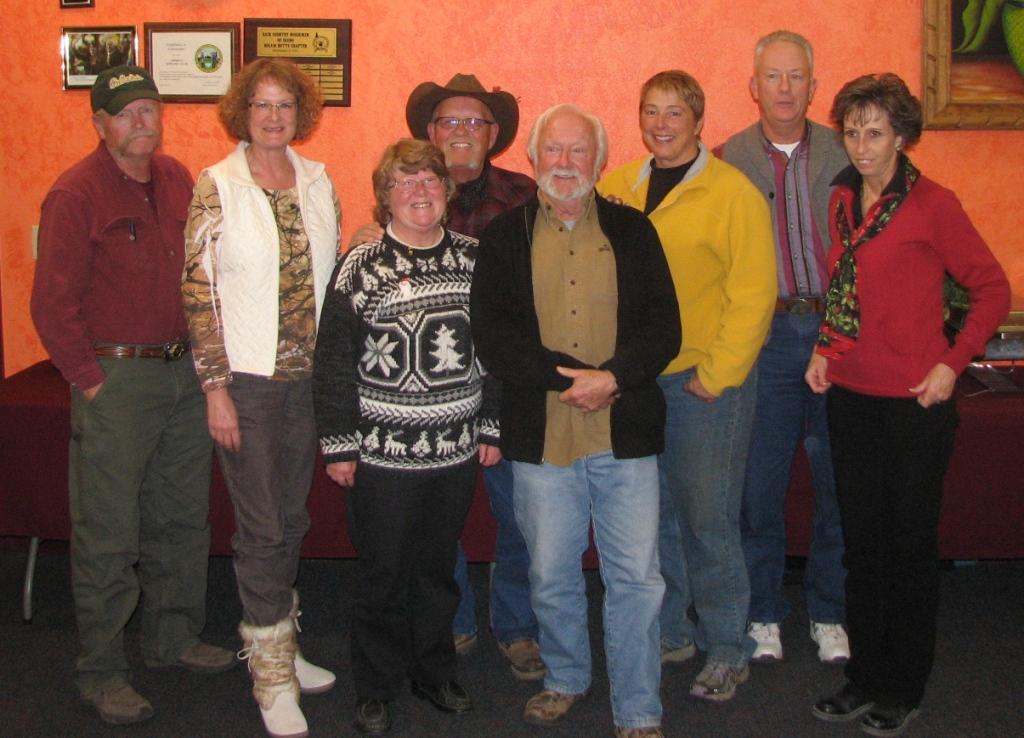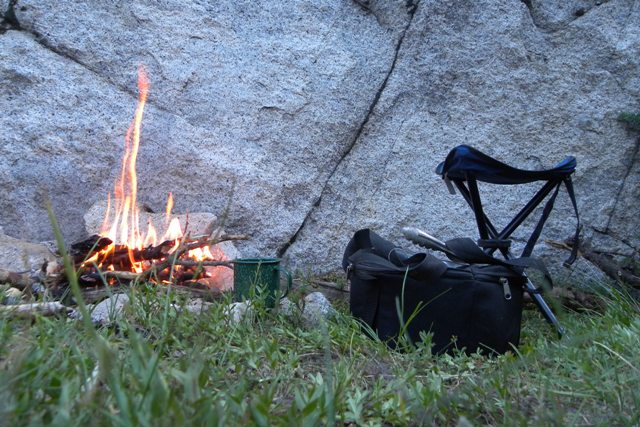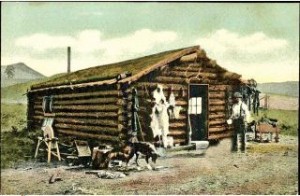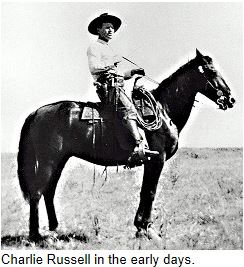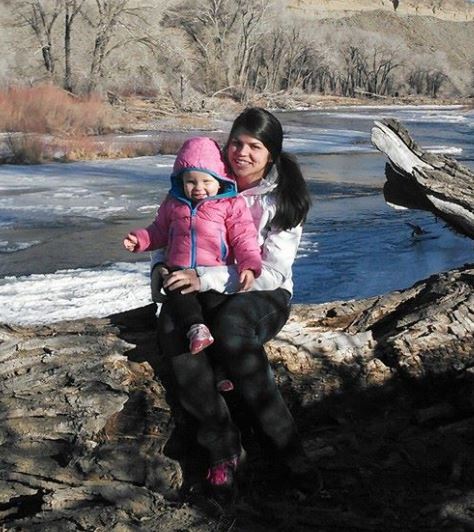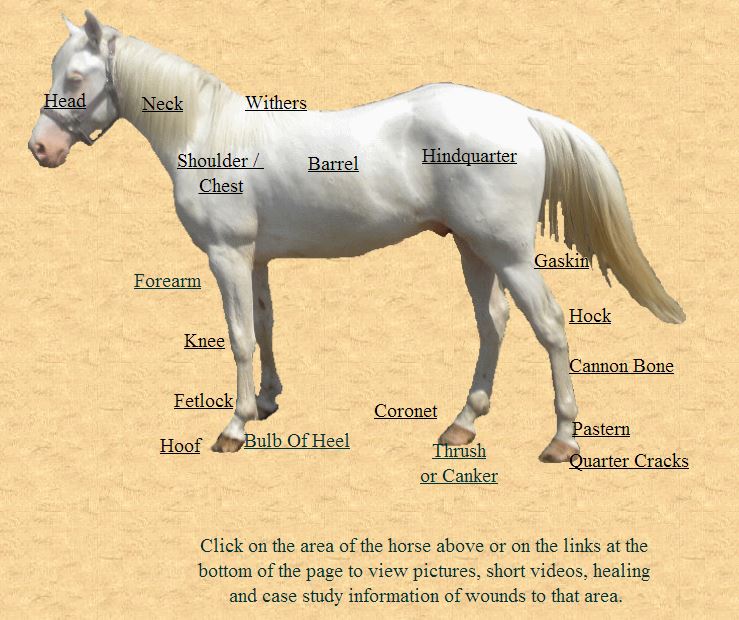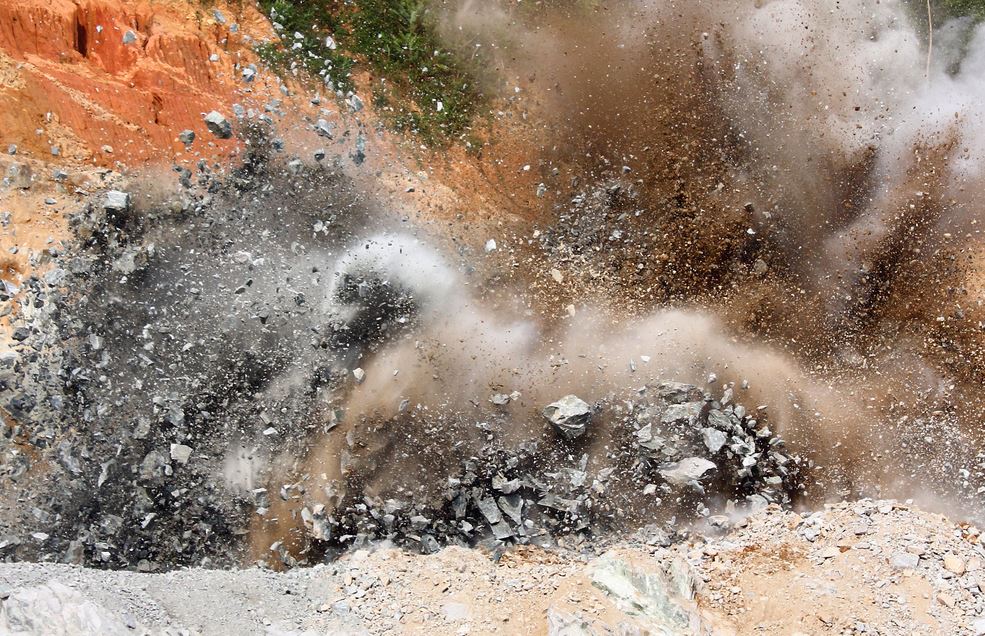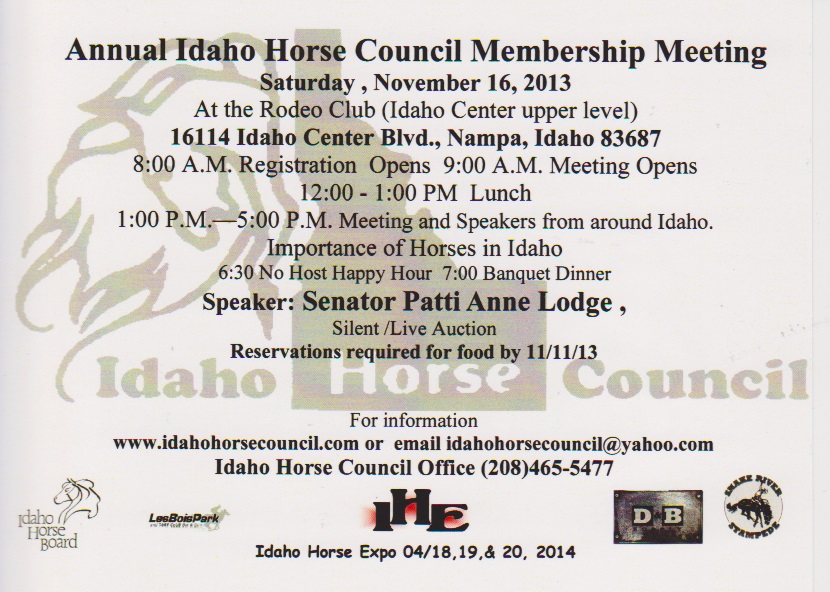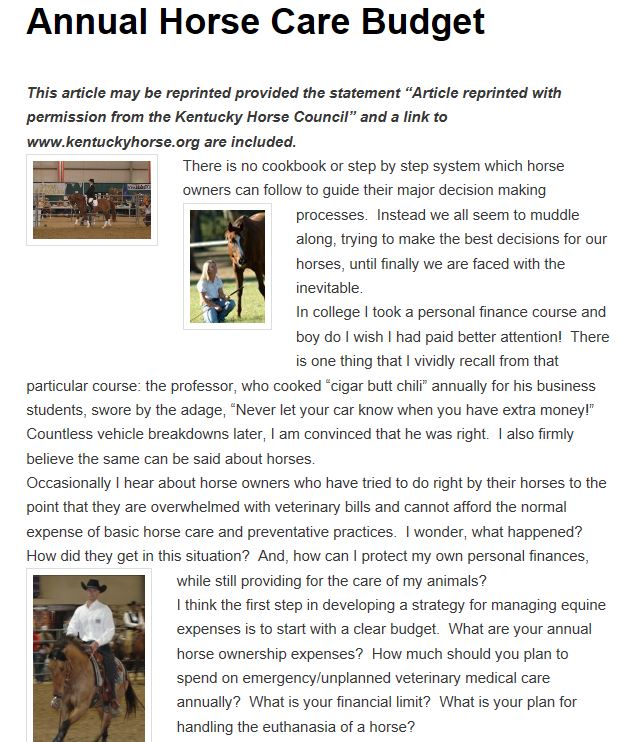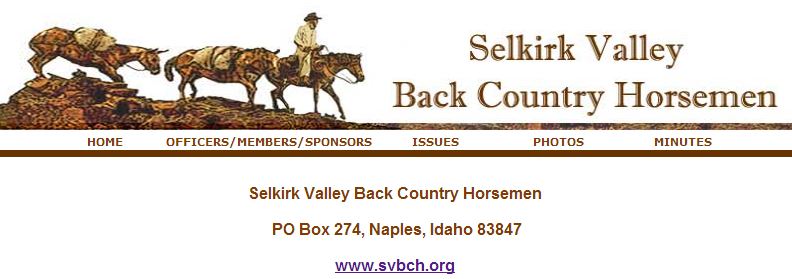
BCHI State Board Meeting and Convention, hosted by the Selkirk Valley BCH on March 21 and 22nd was a great success and tons of fun, says SBBCH Roving Reporter, Marybeth Conger
The Weather God was looking out for those that made the trip too, as roads were clear and dry. The views of the northern Idaho landscape to include some Moose and Elk sightings were awesome. Due to the distance (appx 1,000 round trip) there was some major carpooling going on. A big thanks to Phil and Kay Ryan, Robbin Schindele, Bill and Marybeth Conger and Roger Segers who represented the Squaw Butte Chapter well at the State Board and State Foundation Meetings.
It is apparent that the Squaw Butte Chapter is active, both locally and statewide, as 4 of the 4 resolutions discussions items came from us. So let’s recap these Proposals. The State Insurance Proposal, presented by Bill Conger, BCHI Insurance Chairman passed. This mean the State established a policy that at PUBLIC EVENTS dogs must remain contained in camp, and no alcohol shall be sold unless by a licensed caterer.
Then our State and BCHI National Director Robbin Schindele, presented another Proposal dealing with Crowdsourcing and this too passed. So BCHI will be donating$ 2500.00 BCHA to show support of our National organization. In fact, the BCHA chairman called to thank us that day!
Next Marybeth Conger, Alternate State Director presented the proposal on the Calendars and this failed. The Consensus felt it was better to print 2,000 calendar with the intent to sell them all. Of interest though, when the call was made for each individual calendar to commit, the State was about 200 short of the 2,000 mark. This roving reporter found this very interesting.
The last proposal dealing with the importance of growing our organization with increased chapters and increased members within our chapters was presented by Marybeth and became more of a discussion item. It was interesting hearing what other chapters are doing to grow. There continues to be more emphasis on youth projects and the scholarship idea from Panhandle was just one of these. Also, the State Board approved CONDITIONALLY the Palouse Chapter of BCHI, which is up north. Plus there is some interest to start a chapter is the South East area of our state. So it looks like BCHI is looking at ways to grow.
Roger Segers, our Foundation Director attended the Foundation meeting and reminded us to use the Foundation. There is still monies available for Education and Trail work.
Now that we have covered the business part of things, the Convention was just plain FUN. The Food of delicious, and the Speakers were informative and had great presence. Although I could have missed a few of the Trappers graphic photos right before dinner, his message was excellent. The Mayor was a kick and we learned that the Selkirk Valley has more law enforcement due to the proximity of the Canadian border. There was a lively auction and some folks brought home a few special treasures, so you never know when one of them might show up. It was great spending time with BCHI friends from all over the state. All for now!
Photo Contest Results
Attached is a press release for your information and to please pass on to the members. Also attached are two group sign-on letters that BCHA and The Wilderness Society generated regarding the US Forest Service trail maintenance backlog–one was sent last week to all members of Congress, the other was sent to the Chief of the USFS.
The press release is ready to go.
Peg
Peg Greiwe, Executive Secretary
Back Country Horsemen of America
PO Box 1367
Graham WA 98338-1367
360-832-2461
www.backcountryhorse.com
TRAILS Legislation Letter 3-25-14 FINAL
BCHA-TWS Trails release – FINAL
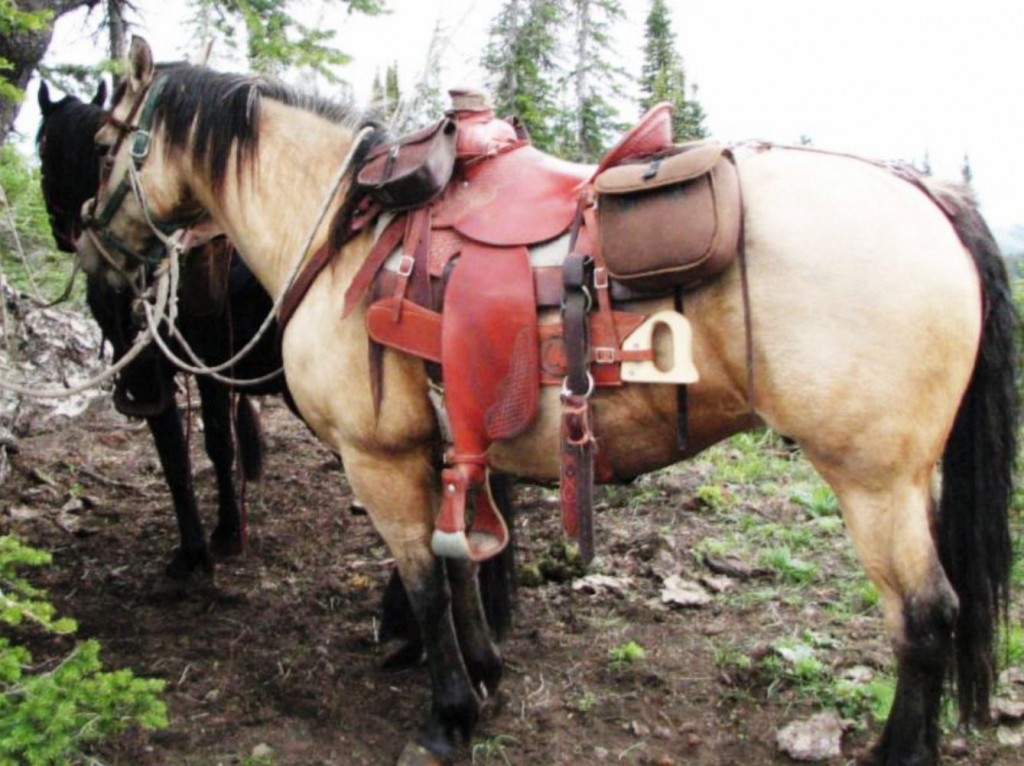

For years I have carried a great trail saw on my saddle that I got from Sawtooth Outfitter. They no longer carry them but I did find out where you can get them. The one I like is the Fanno K24 curved tree saw. You can make a saw sheath or the are available to order. Here a a good video on care of your saw.
Fanno Saw Works
Address: 224 W 8th Ave, Chico, CA 95926
Phone:(530) 895-1762
http://www.fannosaw.com/
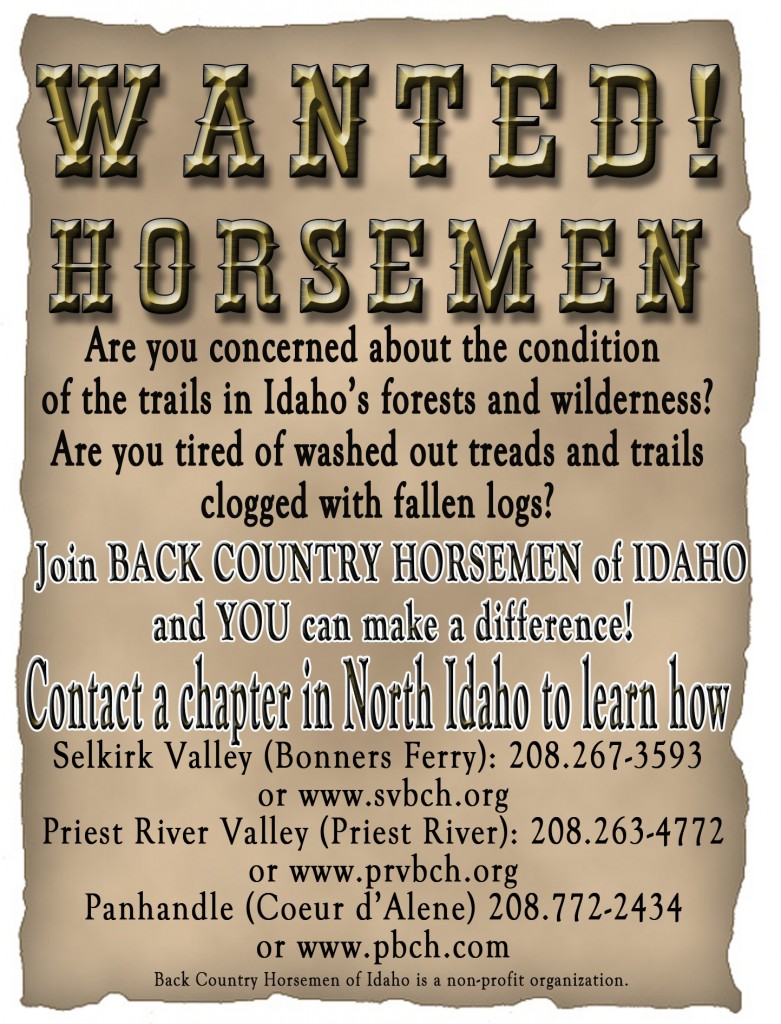
The Back Country Horsemen of Idaho’s annual convention was hosted in Bonners Ferry by the Selkirk chapter of the organization. The Selkirk chapter is centered in Bonners Ferry. Back Country Horsemen of America is a national organization with state organizations that have chapters located throughout the state.
Twelve Idaho chapters joined the Selkirk chapter at the Kootenai River Inn to get together to discuss current business. The organization’s mission is to promote the common sense use and enjoyment of horses in the back country. BCHI works with the Forest Service to keep trails open to horseback riders and to maintain and build trails. BCHI also promotes the use of horses on the trails and works to
educate horsemen of all ages to participate in sustainable use of forest trails by horseback. All who have interest in riding the back country of Idaho are welcome to join. It is a very close knit group of riders who have the same goal of keeping horseback riding available on the forest trails.
2014 Convention Report 2014 SBD Meeting Minutes 2014 Convention Minutes
Ever purchased a new saddle and after the excitement of you new ride wore off, realized your legs would take a beating as you try in vain to mold your fresh leather stirrups fenders into a comfortable position? You constantly turn your ankles outwards in an attempt to get that perfect placement and lose your horsemanship in the process… OR you get the brilliant idea of leaving a broomstick handle through your stirrups, with the fenders flipped outwards when the saddle is not in use?
Well, never again! Here’s a quick and easy fix to get your stirrup fenders in the perfect position for your ankles – with your toes facing forwards. How To Do a Texas Roll

Interior Secretary Sally Jewell may want an official invitation from the state’s congressional delegation to study the Boulder-White Clouds National Monument proposal, but that’s unlikely to happen.
All four Idaho Republican senators and representatives expressed opposition in February to use of the 1906 Antiquities Act by President Barack Obama to designate the central Idaho mountains as a national monument.
“I think we would be very happy to meet with the community, whoever invites us,” Jewell said in Boise on Monday.
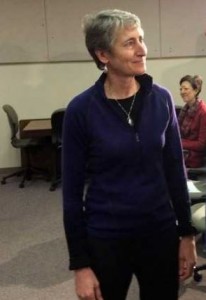 The Stanley City Council authorized letters last week asking Jewell and Agriculture Secretary Tom Vilsack Thursday or their staffs to meet with the council on or about June 12.
The Stanley City Council authorized letters last week asking Jewell and Agriculture Secretary Tom Vilsack Thursday or their staffs to meet with the council on or about June 12.
“We want them to explain their intent in more detail and exactly what measures would be required in a management plan to protect the historic, scientific and cultural values,” said Councilman Steve Botti.
Designation of a 570,000-acre Boulder-White Clouds National Monument has emerged as a serious option, especially since the death of Idaho Rep. Mike Simpson’s bill. His bill would have protected swaths of wilderness while preserving some popular ATV and motorcycle trails. A monument can be created with a president’s signature and does not require congressional action; it also has more flexibility in its implementation than does land designated wilderness, which generally bans all mechanized uses, including bicycles.
Press Release 03/20/2014 Secretary Jewell Announces Order to Implement Youth Initiative
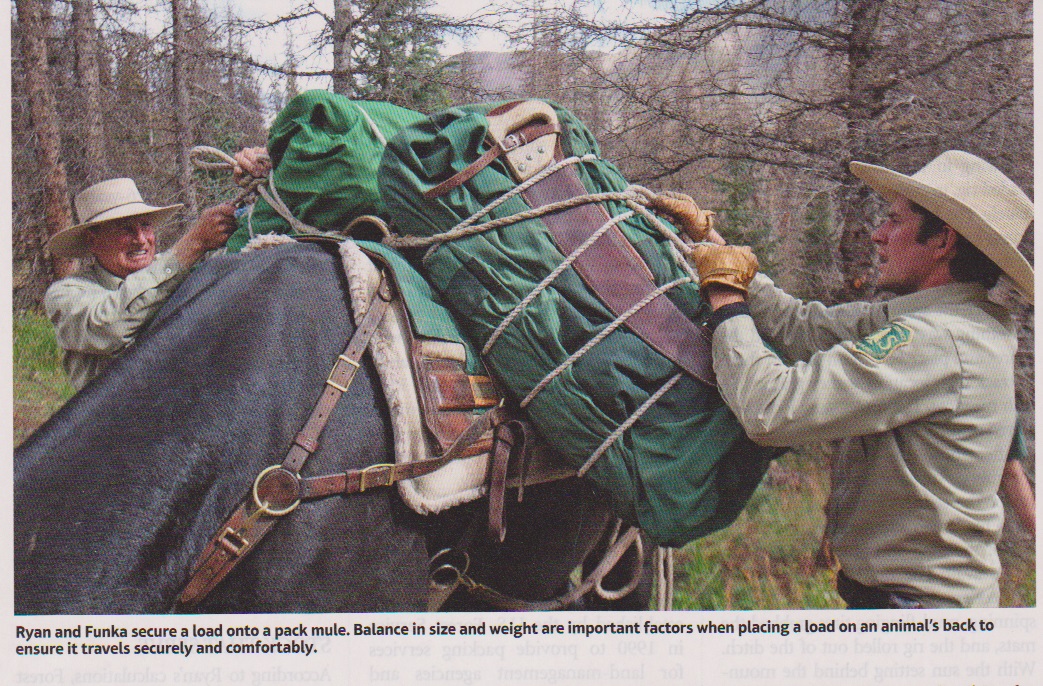
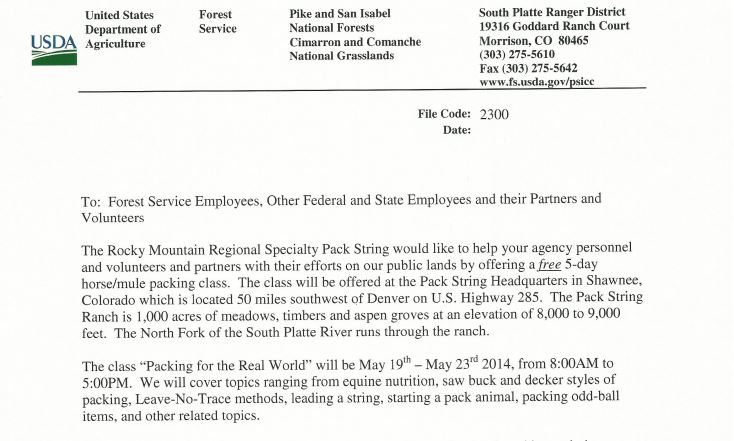 Read more about the Rocky Mountain Regional Specialty Pack String
Read more about the Rocky Mountain Regional Specialty Pack String

Nature Conservancy’s Kareiva urges people-based environmentalism
The Nature Conservancy’s Chief Scientist Peter Kareiva has questioned some of the basic myths of environmentalism: that nature is fragile, that its highest value is as a place of solitude and that it’s best when people aren’t in it.
Don’t just criticize Idaho Trails; help keep them in shape!
Boise, Idaho • Environmentalists and mountain bikers have reached agreement on a proposal for protecting the Boulder-White Clouds as a national monument.
The Idaho Statesman (http://bit.ly/1qtfmdF ) reported Tuesday that the agreement creates zones to maintain wilderness characteristics in some areas, while continuing mountain-bike access to the popular area north of Sun Valley.
Marijuana growing on our national forests causes significant harm to the land, water and animals. The toxicants and lethal weapons found at these sites are both shocking in terms of amount, and raise concerns regarding the health of the Region’s forests. The Forest Service, along with other agencies and volunteers, are working together to restore these impacted lands.
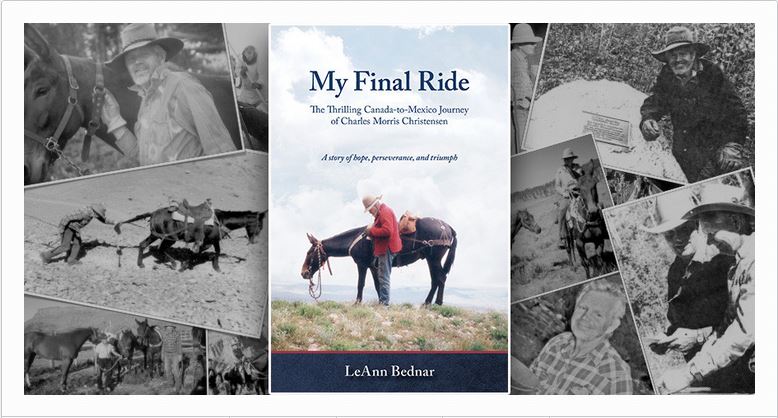 My Final Ride is the true-life story of Chuck Christensen’s epic mule-back Canada-to-Mexico journey while battling stage-three bone marrow cancer/multiple myeloma. Given eighteen months to three years to live and told he’ll never ride again, Chuck crawls back on his mule and, with tears streaming down his face, vows to trek as far as he can. Learning of the Great Western Trail, which eventually is to stretch from Canada to Mexico, he excitedly sends letters, makes phone calls, collects maps, and sets out on his daring ride. Along the way he faces mud bogs, giardia, broken bones, and deep discouragement; more than once he worries he’ll have to put an animal down. With water and food scarce, his mules begin to eat cowpies; his horse, however, refuses, and begins to starve. Ultimately, Chuck’s success depends on his fixed determination to never give up.
My Final Ride is the true-life story of Chuck Christensen’s epic mule-back Canada-to-Mexico journey while battling stage-three bone marrow cancer/multiple myeloma. Given eighteen months to three years to live and told he’ll never ride again, Chuck crawls back on his mule and, with tears streaming down his face, vows to trek as far as he can. Learning of the Great Western Trail, which eventually is to stretch from Canada to Mexico, he excitedly sends letters, makes phone calls, collects maps, and sets out on his daring ride. Along the way he faces mud bogs, giardia, broken bones, and deep discouragement; more than once he worries he’ll have to put an animal down. With water and food scarce, his mules begin to eat cowpies; his horse, however, refuses, and begins to starve. Ultimately, Chuck’s success depends on his fixed determination to never give up.
A story of hope, perseverance, and triumph
GARY HOLT welcomes singer/song writer TEMPLETON THOMPSON and Back Country Horsemen of America’s RANDY RASMUSSEN to EQUESTRIAN LEGACY RADIO.
Templeton joins us around the “Campfire Cafe'” as we talk about her music and her life with horses.
Randy joins us for an open line discussion on the future of our Horse Trails and the public’s role in maintaining and preserving our continued use of public lands.
Back Country Horsemen of Missoula Celebrates 40 Years
By Connie Basham
Following the vision of the original founding members from the Flathead Valley, it didn’t take much convincing for a few Missoula horseman and packers joining in kindred spirits, to form the second affiliated chapter of Back Country Horsemen in the early part of 1974. On April 4-6, 2014 Missoula Back Country Horseman will celebrate their 40th year of affiliation as part of the national organization of BCHA.
BCH of Missoula will be sharing this celebration with the Wilderness Association for their 50th anniversary of the Wilderness Act of 1964.
The unification of these two chapters, later joined by members from Idaho, became the backbone of the Back Country Horsemen of America, as we know it today. Thanks to these charter members – Mike Chandler, Smoke Elser, Jim Brogger, Ray Roberts, Chuck Smith, John Lance and Fred Hartkorn, Missoula’s chapter has grown to be one of the largest in the nation.
Developing a sustained working relationship with many agencies and organizations, Missoula Back Country Horsemen dealt with numerous issues over the decades which threatened stock use on public lands. Issues including, trail and trailhead closures and abandonment; access problems; endangered species; user permits; trail sharing disputes; and other land use concerns.
Working with local, state and federal agencies, BCH of Missoula members have spent countless hours, weeks, months and years pouring over forest management plans, congressional issues, environmental matters and a host of other concerns facing stock use of the back country. Vast amounts of time and labor, both human and equine, have gone into building, clearing and maintaining trail systems, trail head facilities, camp facilities, bridges and buildings to protect and promote horse use in Montana. These efforts have benefited numerous trail users insuring our continued presence while remaining a valued advocate for Montana’s wildland.
BCH of Missoula/Montana have always been actively involved in wilderness designation and preservation throughout the state. The Missoula chapter was one of many that helped stave off drilling for oil along the Rocky Mountain Front of the Bob Marshall Wilderness preserving its untouched wildness forever.
With the objective of educating and encouraging sensible, responsible horse and stock use, Missoula BCH sponsored the Equine Expo for public involvement. They proudly and actively participate in the use and enjoyment of those successful efforts to uphold our horse heritage in Montana’s back country.
For convention information visit: www.bchmt.org
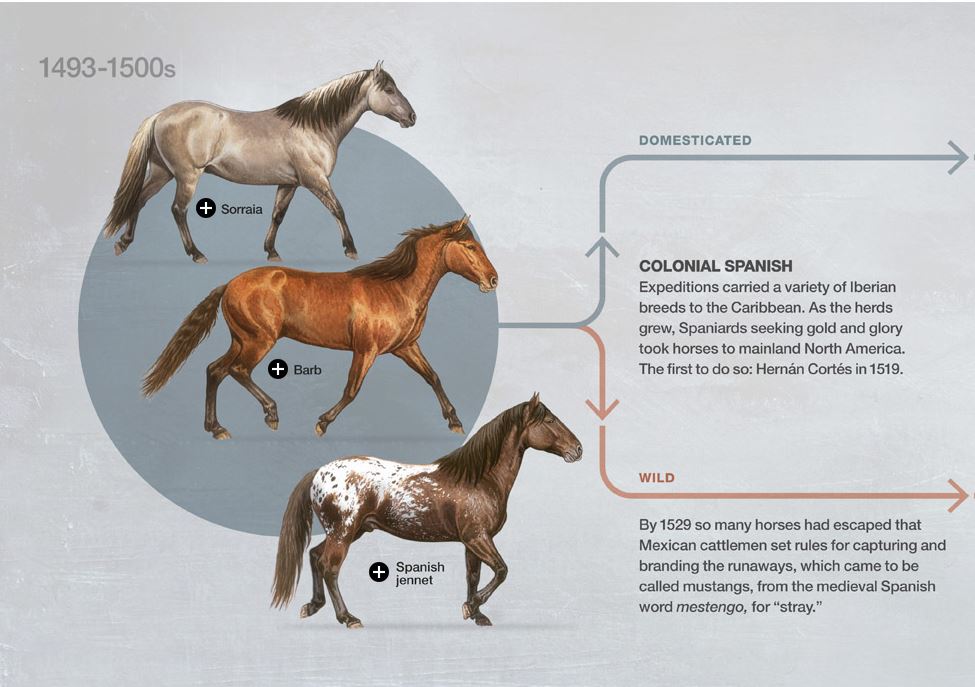 Click on picture to visit National Geographic interactive to learn about the reintroduction of horse into the new world and the development of unique american breeds and the effect the horse had on the people living there.
Click on picture to visit National Geographic interactive to learn about the reintroduction of horse into the new world and the development of unique american breeds and the effect the horse had on the people living there.
People of the Horse
Horses forever changed life on the Great Plains. They allowed tribes to hunt more buffalo than ever before. They tipped the balance of power in favor of mounted warriors. And they became prized as wealth. For Native Americans today, horses endure as an emblem of tradition and a source of pride, pageantry, and healing. Read More
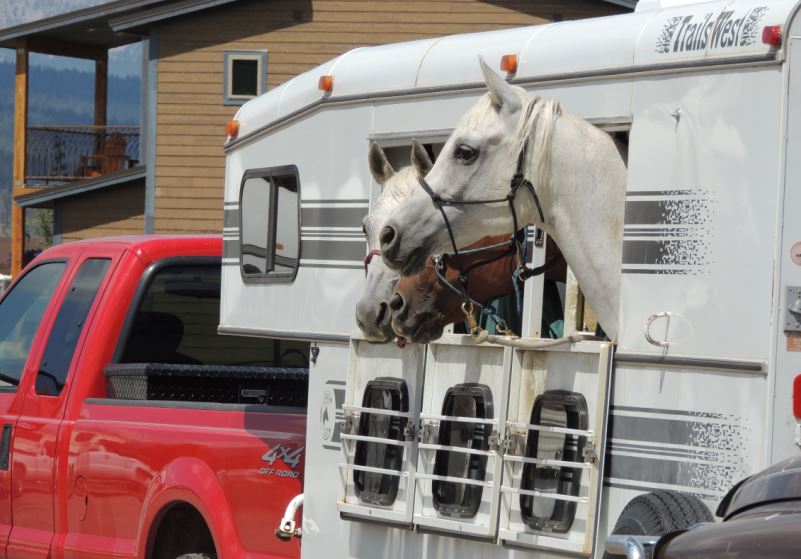
Trailers. A lot of us have them. Many just sit around until they are needed, then we hook up, load them up and head down the highway. They’re just back there. They follow our tow vehicles. Unfortunately trailers are the cause of an alarmingly large number of tragic highway accidents. Unfortunately most of those accidents could have easily been prevented.
Most of us have significant investments in our trailers. We often have a significant investment in the cargo that we carry and usually we have a significant investment in our tow vehicles and the people we have inside those tow vehicles. A relatively small investment in time and money can protect those other “investments” as well as protect others using the highway who may be unwitting victims of dangerous trailers.
PART ONE:
HITCHING EQUIPMENT
PART TWO:
TRAILER BODIES & RUNNING GEAR
PART THREE:
LIGHTS AND VISIBILITY
PART FOUR:
TRAILER SAFETY
PART FIVE:
WHAT SUPPORT YOU NEED
KBR / LRTC Survival School
PREVENTING TRAILER ACCIDENTS
The Wild Horse Mentors project is a concept that was first conceived by the LIFE Foundation, the “Wild horses” Internet Group and the Kickin’ Back Ranch (KBR). The idea was to develop a corps of wild horse enthusiasts who could help new wild horse and burro adopters by sharing their skills and knowledge, or who could assess situations and make referrals so that adopters can find the help that they need.
As the concept matured, a non-profit corporation called Least Resistance Training Concepts (LRTC) was formed to administer the Wild Horse Mentors, become a legal Volunteer Service Organization to the Bureau of Land Management (BLM) and an authorized adoption agency for the State of Nevada Comstock Wild Horse Program and for the US Fish and Wildlife Service.
Video suggested by Linda Hays (click on picture to watch) & Horses Chinese New Year
Celebration Park
A new stop on the way to the Triple Crown?
February marks the beginning of trail riding season for many of us in the Squaw Butte Chapter. We are fortunate to live in a part of the country where diverse terrain and climate allow for adequate riding weather year round. Deep snow and cold may linger in mountains surrounding arid high deserts of sand and sage suitable for horse and rider.
Celebration Park was again the chosen site for this year’s first of the season fun ride. It is easy to understand why ancient civilizations made this area their home for thousands of years. A natural fortress of rock cliffs borders an edge of the Park with the Snake River flowing with life through the center, spanned by the Guffey railroad bridge, built in 1897, marking one of few Snake River crossings.
Six SBBCHI members saddled ready to ride by 11:00AM on a beautiful February morning – beautiful despite being a Monday! The ride was originally planned for the previous Saturday but Mother Nature had plans of her own – plans of driving wind and rain not conducive to trail riding.
Our group meandered through the desert floor littered with large boulders adorned with petroglyphs dating back thousands of years. We skirted Halverson Lake, crossed a marsh fed by a small spring and tethered to the remains of an old corral for lunch.
The dilapidated corral is in dire need of repair. Loose barbed wire, rotted rails and a few sound posts are all that remain. We talked about fixing the corral up last year. Unfortunately, the corrals are not part of the park. They are owned by a California rancher and nobody seems to know how to get hold of him. It is not easy for a group of folks who seem to have the “fix it” gene imbedded in their DNA to see such a thing go unattended. I would not be surprised to find the corral in better repair come next year’s fun ride.
We looped around back toward the trailers along a trail hugging the Snake River. Janine and little Hilary had left before lunch so Janine could return in time for work. Rob and Teri rode on ahead while Bill and I took up the rear, chatting about the best way to cook rattle snake and rock chuck. Bill rode Billy Bob, a large, loveable mule whose personality is reminiscent of Eeyore. I asked Bill if he thought Billy Bob could run. Bill replied he thought so. He has seen Billy Bob run in the pasture and he sure looked pretty. I don’t think my mule, Annie, can run very fast, I commented. She runs real stiff legged. Ruth, the mule Festus rode in Gunsmoke – was the only mule I’d seen that could outrun a horse. An observation that was about to change.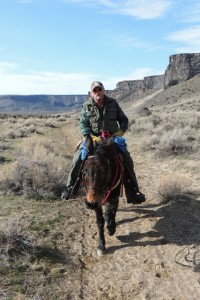
I had been turned around in my saddle most of the way back talking Bill’s ear off and taking pictures. Thank goodness I’d put my camera away and was facing forward when somebody opened the starting gates. One second I’m strolling along on my mustang, König, the next – I’m pulling with all my might trying to initiate a one rein stop on a runaway mustang. Billy Bob shoots past me at exactly the speed of 1,126 ft/s. How do I know this? I heard it. 1,126 ft/s is the speed required to break the sound barrier and that is exactly what Billy Bob sounded like as he thundered past me…then past Teri and finally Rob with König and I at a close second. König is not a saddle horse. He has been a pack horse his entire life. I was riding him today only because my horse, Jack, has a respiratory infection. Had I cranked on Jack’s head as hard as I cranked on that mustangs I’d have pulled him over! I finally get König to stop about the same time Bill hit the dirt. I think Billy Bob scared himself. He ran wild-eyed back to me and König with his very best, “WTH?” mule expression. Eeyore my ASS! (pun intended.)
Thankfully, Bill was not seriously hurt although I imagine the next couple of days would find Bill discovering soreness in places he didn’t know he had.
I pulled away from Celebration Park with a conviction of working on König’s brakes in the days to come and one more reason for the heartfelt prayers that Jack would heal quickly.
Back home I came across a documentary on the great Triple Crown winner Seattle Slew. Slew was purchased for the unbelievably low price of $16,000.00. It was said by some that he was not a pretty horse in the sense of what a race horse was supposed to look like. Some said he looked more like a mule than a horse. I pulled up a picture of Seattle Slew and placed it alongside one of Billy Bob….damn if there wasn’t an uncanny resemblance. I know where I’d place my $2.00 bet.
This Pacific Crest Trial bridge crosses the Bumping River at Goodwin Meadows in the William O. Douglas Wilderness. During August of 2013 the several Back County Horsemen of Washington members worked with the USFS, Naches Ranger District and helpers from the Pacific Crest Trial Association and Earth Corps replaced the bridge.
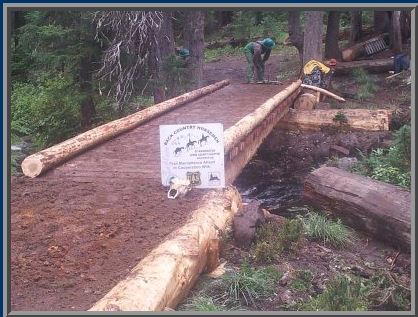 Members of Washington Trails Association and a local multi-user trail organization from Yakima also provided labor for the project. The BCHA Education Foundation awarded a $1,000 grant to purchase the bridge decking.
Members of Washington Trails Association and a local multi-user trail organization from Yakima also provided labor for the project. The BCHA Education Foundation awarded a $1,000 grant to purchase the bridge decking.
Download Mountain Manner Handbook Back Country Horsemen Trail Etiquette – BCWV
The Leave No Trace Seven Principles are also available for various environments and activities.
Plan Ahead and Prepare
- Know the regulations and special concerns for the area you’ll visit.
- Prepare for extreme weather, hazards, and emergencies.
- Schedule your trip to avoid times of high use.
- Visit in small groups when possible. Consider splitting larger groups into smaller groups.
- Repackage food to minimize waste.
- Use a map and compass to eliminate the use of marking paint, rock cairns or flagging.
Travel and Camp on Durable Surfaces
- Durable surfaces include established trails and campsites, rock, gravel, dry grasses or snow.
- Protect riparian areas by camping at least 200 feet from lakes and streams.
- Good campsites are found, not made. Altering a site is not necessary.
- In popular areas:
- Concentrate use on existing trails and campsites.
- Walk single file in the middle of the trail, even when wet or muddy.
- Keep campsites small. Focus activity in areas where vegetation is absent.
- In pristine areas:
- Disperse use to prevent the creation of campsites and trails.
- Avoid places where impacts are just beginning.
- In popular areas:
Dispose of Waste Properly
- Pack it in, pack it out. Inspect your campsite and rest areas for trash or spilled foods. Pack out all trash, leftover food and litter.
- Deposit solid human waste in catholes dug 6 to 8 inches deep, at least 200 feet from water, camp and trails. Cover and disguise the cathole when finished.
- Pack out toilet paper and hygiene products.
- To wash yourself or your dishes, carry water 200 feet away from streams or lakes and use small amounts of biodegradable soap. Scatter strained dishwater.
Leave What You Find
- Preserve the past: examine, but do not touch cultural or historic structures and artifacts.
- Leave rocks, plants and other natural objects as you find them.
- Avoid introducing or transporting non-native species.
- Do not build structures, furniture, or dig trenches.
Minimize Campfire Impacts
- Campfires can cause lasting impacts to the backcountry. Use a lightweight stove for cooking and enjoy a candle lantern for light.
- Where fires are permitted, use established fire rings, fire pans, or mound fires.
- Keep fires small. Only use sticks from the ground that can be broken by hand.
- Burn all wood and coals to ash, put out campfires completely, then scatter cool ashes.
Respect Wildlife
- Observe wildlife from a distance. Do not follow or approach them.
- Never feed animals. Feeding wildlife damages their health, alters natural behaviors, and exposes them to predators and other dangers.
- Protect wildlife and your food by storing rations and trash securely.
- Control pets at all times, or leave them at home.
- Avoid wildlife during sensitive times: mating, nesting, raising young, or winter.
Be Considerate of Other Visitors
- Respect other visitors and protect the quality of their experience.
- Be courteous. Yield to other users on the trail.
- Step to the downhill side of the trail when encountering pack stock.
- Take breaks and camp away from trails and other visitors.
- Let nature’s sounds prevail. Avoid loud voices and noises.
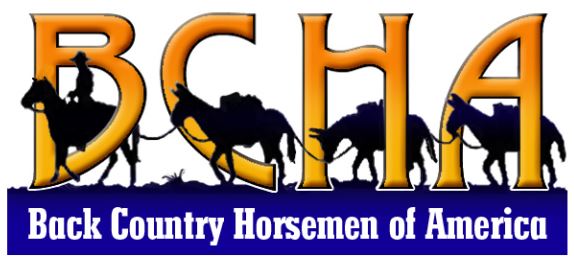
• National Newsletter
• Public Lands Committee
• Public Liaison Committee
• Education Chair/Committee
• National presence on the “Hill”
• Website: www.backcountryhorse.com
• Guidebook, publications and traveling display
• Camaraderie
• Strength in numbers
• Sharing information
by Sarah Wynne Jackson
Back Country Horseman of America preserves our right to ride horses on public lands across the country. They know that joining forces with other groups strengthens our voice and our influence. They proudly introduce their latest Advocacy Partner, the Lake Ray Roberts Equestrian Trail Association. LRRETA is an affiliate of the Greenbelt Alliance of Denton County, a not-for-profit organization that promotes recreation and preservation of the Greenbelt of Lake Ray Roberts State Park in Texas.
The Best Trail in Texas
Located just outside the city of Pilot Point in North Texas, the Lake Ray Roberts equestrian trail system is 20 miles of multi-use trails that runs north from Highway 380 to Pilot Point. This unique trail corridor meanders along the heavily wooded banks of the Elm Fork Branch of the Trinity River. Equestrians, hikers, and bikers can access the trail at three trailheads.
This popular trail is shaded from summer sun and shielded from winter winds. Considered one of the best trails in Texas, it offers riders beautiful scenery and varied terrain, including undulating hills and flat stretches, woods and meadows. The highly prized sandy loam soil provides excellent footing, regardless of the weather.
Coming Together to Get It Done
In 2010, local flooding washed out a bridge in the middle of the trail, significantly impacting the trail experience by breaking it into two shorter trails. Park Rangers proposed collapsing the equestrian trail into the biking trails due to the wash-out, but over 200 equestrians responded to a call to action and expressed their support for separate and expanded horse trails. The equestrian community volunteered to clear trails and attended various meetings to resolve the damaged section.
In June 2013, the Lake Ray Roberts Equestrian Trail Association formed to restore the trail to its original condition. In short order, they voted in officers, created a Board of Directors, and appointed folks to oversee various committees. Their goal is to raise $60,000 to $120,000 to replace the bridge through construction of a new one or placement of a used one.
LRRETA’s long-term mission is to maintain and enhance the Lake Ray Roberts equestrian trail system. Certified horse country, Denton County and the Pilot Point area are home to many riders of different disciplines, all of whom enjoy taking their horses on the trail. In the future, LRRETA would like to add additional and enhanced horse camp sites and put Lake Ray Roberts on the map as a destination for trail riders from across the country.
About Back Country Horsemen of America
BCHA is a non-profit corporation made up of state organizations, affiliates, and at-large members. Their efforts have brought about positive changes regarding the use of horses and stock in the wilderness and public lands.
If you want to know more about Back Country Horsemen of America or become a member, visit their website: www.backcountryhorse.com; call 888-893-5161; or write PO Box 1367, Graham, WA 98338-1367. The future of horse use on public lands is in our hands!
Stay out of trouble with these essentials
When you’re on the trail it’s a good idea to carry a few emergency items. This list will give you ideas for what you may want to carry.

The object of carrying these items is to ensure that both horse and rider have a great ride and make it back to the trailhead to ride another day.
The combined weight of everything in this list is under 4 pounds.
What to pack:
- Map of the Area – It helps to know how to read it
- Compass – Again, it helps to know how to use it
- Rain Gear – These items usually get tied behind the cantle and include a set of rain chaps and a Wyoming Traders Rain Slicker.
- First Aid Items – bandage, antibiotic ointment, aspirin
- Flashlight
- Cell Phone (for emergencies) – Make sure you’ve ICED it! Keep your phone in a shirt or jacket pocket so it stays ON YOU in case you become separated from your horse.
- Water Bottle(s)
- Bandanna
- Hoof pick
- Baling Twine – Almost as good as duck tape
- Garbage Bag
- Camera
- GPS
- Spare batteries
If you have pommel bags use them so the weight is over the withers instead of the horse’s kidneys.
You may also need to carry other items depending upon the length of time and the distance you plan on riding.
Buckle-less Hobbles by Outfitters Pack Station

These custom made hobbles boast a unique and very effective buckle-less closure system that eliminates any awkward fumbling with buckles, a welcome feature on cold and wet mornings. The benefits of this no buckle system go far beyond the convenience factor and extend into the user’s safety as well. Being able to quickly fasten and unfasten the hobble cuffs will get you out of the danger zone that exists when you’re under the horse by his hoofs and very vulnerable to an accidental strike or kick.
Outfitters Pack Station crafts these heavy duty hobbles from high quality oil tanned harness leather that has been hot dipped in paraffin wax to resist the effects of water and the environment. The hardware is nickel plated steel that is both lightweight and very durable.
The durability of these hobbles is compounded by their unique construction. The inner body of the hobble is a strip of heavy duty polypropylene webbing that is sandwiched between two layers of heavy duty harness leather. The poly pro webbing prevents any stretching of the layer from occurring and adds a significant measure of strength as well. The cuffs are lined with soft chap leather that is very easy on the animal’s legs and is also easy to clean.

Made without chains these hobbles are extremely light weight, a fact that appeals to anyone packing for extended periods or camping off of their riding where every once counts. Not only are these hobbles lightweight the sandwiched construction allows them to be very narrow (only one inch wide) which reduces pack volume and even allows them to be easily hung from a saddle ring for quick accessibility during a break.
The TrailMeister says: Feel good about bringing these on the trail!
 January 21, 2014 This morning the Back Country Horsemen of America executive committee voted unanimously to adopt the attached image as the official BCHA “brand.” This brand image does not replace the old BCHA logo but will be used exclusively in all official online and published communications and correspondence. The brand was designed by Squaw Butte member Robbin Schindele with finishing touches by freelance creative director Kevin O’Callaghan of Minneapolis, MN.
January 21, 2014 This morning the Back Country Horsemen of America executive committee voted unanimously to adopt the attached image as the official BCHA “brand.” This brand image does not replace the old BCHA logo but will be used exclusively in all official online and published communications and correspondence. The brand was designed by Squaw Butte member Robbin Schindele with finishing touches by freelance creative director Kevin O’Callaghan of Minneapolis, MN.
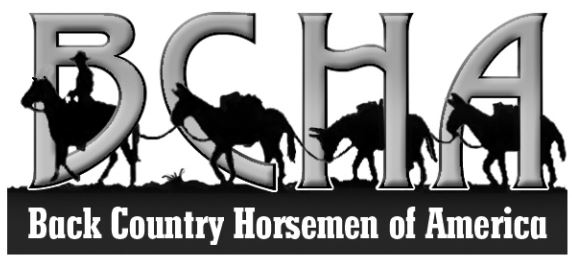
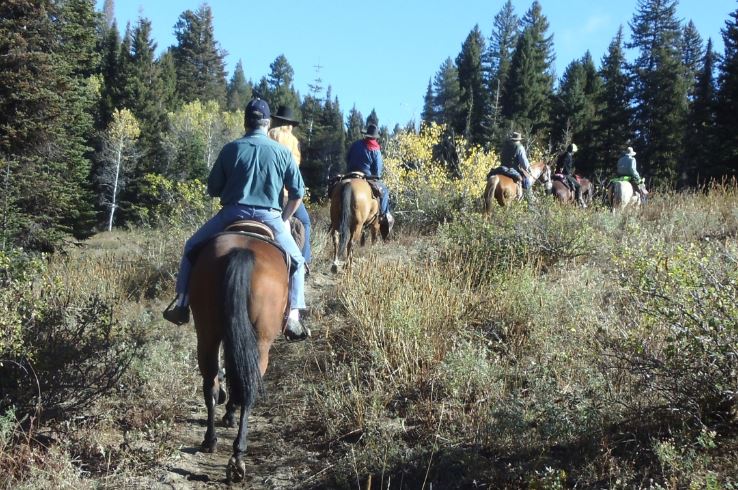
“He has left the village and mounted the steep, And beneath him, tranquil and broad and deep, Is the Mystic, meeting the ocean tides; And under the alders that skirt its edge, Now soft in the sand, now loud on the ledge,
Is heard the tramp of his steed as he rides.” Read Essays
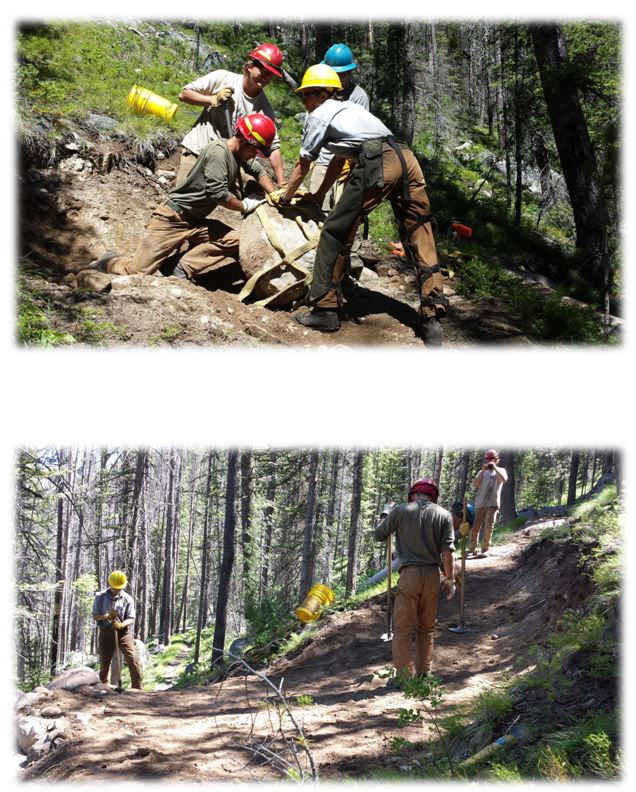
2014 will be the 4th year of a Zone Trail Crew on the Boise National Forest. The North Zone (Emmett, Cascade, Lowman) currently has one of the largest trail crews in the region and has been able to do some outstanding work over the last 4 seasons. Much of this work comes with the help of our volunteer organizations, outside funding, and IDPR. I would ask each of you to look through the attached grant proposal and see if you might be willing to write a letter of support for this proposal. You will notice that this is for motorized trails. Many of the trails on the North zone are Multi-use allowing both motorized and non-motorized travel and they are utilized as such. As we move forward I would like to bring these groups together to help not only with trail work but managing any issues that may arise. As a part of this proposal we are also looking for volunteer commitments. If you would like to commit a number of hours to the “match” of this proposal please include that.
Many of the projects that we have taken on the past 4 seasons have come at the request of our users, we will continue to do so as we try one season at a time to bring our trails back up to standard. If you have questions, comments or concerns about this proposal please feel free to let me know. We input from everyone.
Thank you for your time and thank you for all of the work you have put in over the years.
Zach Poff
Lowman Ranger District
Boise National Forest
zpoff@fs.fed.us
(208)259-3361 ext.7554
Back Country Horsemen of America Celebrates 40 Years with
100 Miles of Volunteerism
by Sarah Wynne Jackson
This year marks Back Country Horsemen of America’s 40th year as the
leading organization keeping trails open for horse use. Their state
organizations have been celebrating this milestone in many unique ways.
Back Country Horsemen of Utah combined their love oftraveling by
horsepower with their dedication to caring for the land. From July 27 through
August 4, about 130 people on 10 authentic Conestoga-style wagons and
horseback rode over 100 miles across central Utah, doing trail projects along
the way. BCHA Utah 40 years trek 2013
Back Country Horsemen of America Teams Up with Tennessee Walkers
by Sarah Wynne Jackson
Back Country Horsemen of America leads the fight to save trails for horse
use and the Tennessee Walking Horse is one of today’s most popular trail
horses. It makes sense that BCHA and the Tennessee Walking Horse
Breeders’ and Exhibitors’ Association (TWHBEA) form a partnership to
recognize Tennessee Walking Horses and their riders that best exemplify the
mission of Back Country Horsemen of America. BCHA TWHBEA recognition program 12 2013
A Better Way to Tie a Rope Halter
Many thanks to Gene, a long time Backcountry Horsemen of Washington member who has many miles and years under his saddle. If you use a rope halter you can save yourself trouble and aggravation by tying the halter properly.
TRAIL BLAZER MAP READING ARTICLE – JULY 2011
The Art of Map Reading – Visualizing Terrain Beyond the Lines and Colors
Are you ready and confident in your ability to find your way safely through the mountains and return in time for dinner? When your destination is remote one of most important skills to learn and be proficient at, is how to read your map. Knowing how to interpret a map helps in planning a trip by allowing you to “see” the terrain prior to your ride. While most people do carry a map, and sometimes even a compass, I find that quite often these vital tools are carried more as lucky charms intended to make the rider feel better about their ride. Take the time to learn how to properly read and interpret your map. Failure to do so could prove annoying at best and disastrous at worse should you become separated from your group and your horse in the back country.
LOCAL HORSEMEN DONATE TO THE COMMUNITY
Several members of the Squaw Butte chapter of Backcountry Horseman of Idaho delivered to the Emmett Valley Friendship Collation 75 lbs of food along with a monetary donation to help stock the shelves there. Pictured left to right are members Bill Conger, Nancy Schindele, Marybeth Conger, Phil Ryan, Shelly Duff, and Kay Ryan. Then they were off to the Pet Adoption League where another 100 lbs of food was donated there. These donations were gathered at the Chapter’s end of year Christmas party on December 14. For more information visit our website at sbbchidaho.org.
 Idaho Sportsmen’s Caucus Advisory Council
Idaho Sportsmen’s Caucus Advisory Council
With a Sportsmen’s Caucus in place in the Idaho Legislature, the ball was now in the sportsmen’s court to form a viable, effective, balanced, and long-lived support and advisory group to those caucuses. Their role is to know when legislation is introduced, research its impacts, gauge the sportsmen’s position(s) on it, determine a consensus position on it, and provide data supporting that position to the Caucus members in both houses before the debate is scheduled.In March of 2005 twenty founding sportsmen’s organizations adopted the bylaws, elected officers and officially formed the Idaho Sportsmen’s Caucus Advisory Council.In the end, sportsmen (the largest constituency in the state after women) can gain a voice and serious influence in conservation issues that affect our wildlife. It is up to us to behave responsibly with restraint and resolve. To deal with the best science available and with the long-term welfare of wildlife in mind. United with other state caucuses around the country we can present a united front against anti-hunting nonsense, habitat destruction, and against bad-science game management programs that might represent other interests than those of wildlife. Contact Phil Ryan our BCHI member on the council for more information
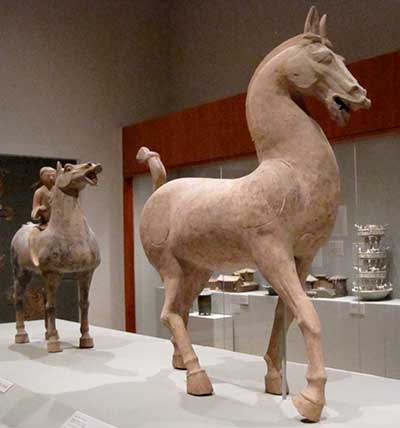 Each month a new president’s corner piece is posted by Kay Ryan on the Squaw Butte website. This blog posting will provide links to each piece posted during the year.
Each month a new president’s corner piece is posted by Kay Ryan on the Squaw Butte website. This blog posting will provide links to each piece posted during the year.
August 2014 President’s Corner
September 2014 President’s Corner
October 2014 President’s Corner
November 2014 President’s Corner
Start preparing now for next seasons camp! Check out this website for some pretty cool camping tips and tricks. From how to make your own lantern out of mountain dew to converting a coffee can into the perfect container for protecting that all important roll of toilet paper.
http://www.buzzfeed.com/peggy/camping-hacks-that-are-borderline-genius
The Problem
America’s National Forest trails are squeezed between the demands of an enthusiastic public and the challenge of shrinking budgets and a lack of attention. According to the comprehensive June 2013 study by the Government Accountability Office, The Forest Service trail maintenance backlog exceeds a half-billion dollars, and only one-quarter of the agency’s 158,000 miles of trails meets agency standards for maintenance. Nearly two-thirds of these trail miles receive no maintenance at all.
Meanwhile, National Forest trails are giving back to American communities at unprecedented levels: since 1980, trail use has increased nationwide by 376% as people seek exercise, relaxation, and adventure on America’s public lands. Forest trails help fuel a $646 billion recreation industry. The constituency of people supporting trails is enthusiastic and energetic, bringing people together through unique partnerships that link hunters, horsemen, hikers, anglers, bicyclists, conservationists and many others in service of our national trails system. Today, nearly a quarter of Forest Service trail maintenance is provided by volunteers, state funding, and other federal and non-federal sources.
The trail network on our national forests is simply too important to let lapse into ruin and disrepair. We are aware that additional resources are necessary to fully maintain our nation’s trails and are working to secure additional funding for trail maintenance. But in a time of limited budget, there are things that the agency can do now to improve trail maintenance, and the Forest Service needs to look for creative solutions to supplement limited funds, empower volunteer networks, and ensure existing resources are used more efficiently.
The Solution
The ideas we support to address these challenges and improve and safeguard our rich treasury of national forest trails include the following:
• Increase transparency in the trail maintenance program by providing an annual breakdown of how the US Forest Service’s trail maintenance budget is used. This breakdown should detail amounts retained for overhead costs and the resulting amounts that are used for actual trail work. This disclosure will allow the Service and the public to consider whether the amount of overhead can be reduced to enable the agency to do more trail work on the ground;
• Institute national-level goals and targets for trail maintenance and stewardship that will be used as performance measures; create incentives that reward exceptional leadership and service on trails among agency staff;
• Modify the “Volunteer in Forest” program to more evenly distribute the risks associated with the use of volunteers throughout the National Forest System, limit the liability carried by any single forest, and lower the liability barriers for using volunteers to assist with trail maintenance and stewardship;
• Provide national direction and better coordination to maximize the utilization of fire crews for trail work whenever possible;
• Prioritize the selection, training, and retention of skilled and motivated trail staff as well as leadership on trails at higher levels of the agency;
• Develop a USFS Enterprise Team focused on addressing the problems and challenges of existing national forest trails – including working more effectively with partners and providing rapid response crews to remediate severe and sudden trail impacts;
• Standardize national protocols for training and certification on chainsaw and crosscut saw use and expand sawyer training capacity beyond the agency to include skilled non-agency partners; and
• Develop policies, procedures, training, and leadership that would allow volunteer crews to operate more independently, effectively, and efficiently, regardless of the presence of US Forest Service staff.
National Forest Trails Stewardship Administration Concepts Proposal
National Forest Trails Stewardship – FINAL Concept Paper Oct 2013
TRAILS Legislation sign-on letter FINAL TRAILS Admin sign-on letter FINAL
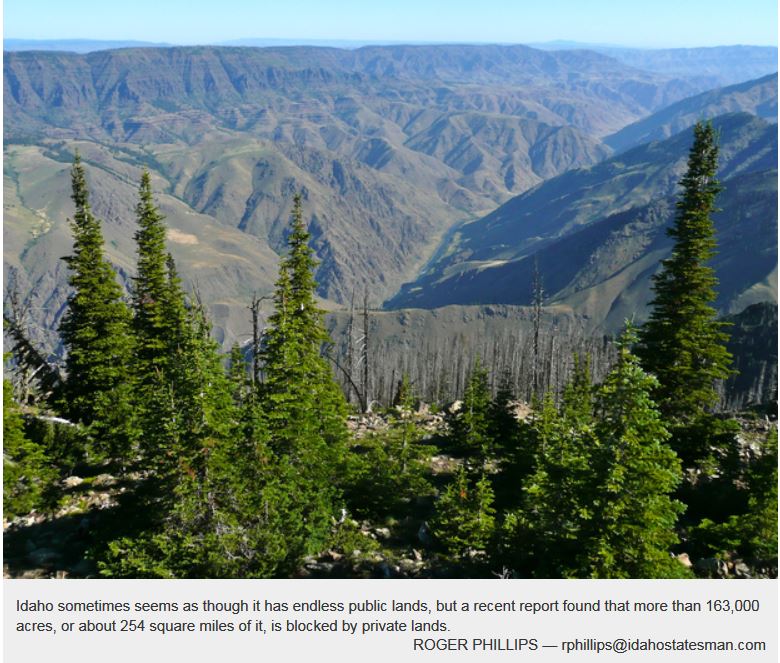
If you live in Idaho and play outdoors, chances are good you’re doing it on public land. They are critical to our quality of life. Outdoor recreation adds billions to the state’s economy and is a magnet for newcomers.
Public lands are a precious resource, and as more people go outdoors, those public lands get more pressure. We could always use more, but buying private land creates problems of its own.
What if we could get more public lands without doing that? It’s possible by getting access to public lands that are currently blocked by private lands.
According to a recent report by the Center for Western Priorities, Idaho has 163,314 acres of inaccessible public lands.
|
Excerpted from Charlie Russell—The Cowboy Years By Jane Lambert, Stevensville, MT |
Living on sourdough bread and coffee…
Con Price has a long recollection of spending the early winter (1890) with Charlie and three others. He wrote:
“They throwed together a log cabin on Warm Spring Creek, in the Judith Basin country… It had a dirt roof, dirt floor. Our cooking utensils were a frying pan and a coffee pot, and very little grub, as we were all broke when the winter came on.
“No stove, we cooked on a kind of fireplace we built. No table, a few tin plates, empty corn cans for cups. We lived on sourdough bread and coffee, and once in awhile we’d find a maverick. We had one horse among all of us, and we would take turns saddling that horse, and go out and look for some meat.
“There were thousands of cattle everywhere, and I don’t think we looked too close to see if an animal had a brand or not. We called it a maverick, no questions asked. The cowmen weren’t too severe about a cowboy eating a piece of their meat once in awhile, as long as they didn’t make a business of selling it. read more
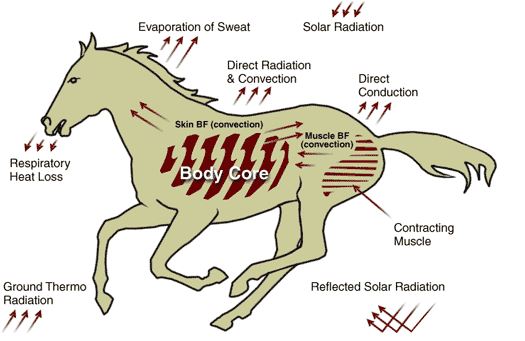 In order for a mammal to survive, internal body temperature is kept within a very narrow range. If the temperature exceeds these limits either above or below, the chemical reactions on the cellular level function improperly. Or they stop functioning at all. Fluctuations outside of the normal temperature range result in health problems or death of the animal. Mature horses maintain their internal body temperature at a range around 38℃. Foals, rapidly growing youngsters, pregnant and lactating mares have a higher norm of their internal body temperature (Hines, 2004). Most horse owners are aware of the damage and crisis inherent with fever states. Few horse owners realize how well adapted horses are to deal with cold when certain aspects of their lifestyle are in place for them.
In order for a mammal to survive, internal body temperature is kept within a very narrow range. If the temperature exceeds these limits either above or below, the chemical reactions on the cellular level function improperly. Or they stop functioning at all. Fluctuations outside of the normal temperature range result in health problems or death of the animal. Mature horses maintain their internal body temperature at a range around 38℃. Foals, rapidly growing youngsters, pregnant and lactating mares have a higher norm of their internal body temperature (Hines, 2004). Most horse owners are aware of the damage and crisis inherent with fever states. Few horse owners realize how well adapted horses are to deal with cold when certain aspects of their lifestyle are in place for them.
Over thousands of years, the wild horse has spread over the entire world. Whatever place in the world they live, the horse was exposed to constantly changing temperature — through a day/night rhythm or a seasonal rhythm. Yet even today wild and semi-wild horses, as well as domestic ones, provided with species appropriate living conditions, survive perfectly any conditions Nature exposes them to. Whether it is the north of Europe, or Australian deserts, the horse is exposed to all of Nature’s changing elements — wind, sun, rain, snow, fluctuating temperature, etc. Never in nature seeking such excessive enclosed shelters as man-made stables and barns nor caves, never in nature seeking ways of covering themselves with fabric. The horse has naturally evolved ways of thriving. Read More
On Saturday November 23, 2013 Squaw Butte Chapter member Laurie Bryan’s granddaughter Sophia fell about 5 feet onto the concrete basement floor. She has an orbital fracture and a fractured skull and the biggest shiner ever. She is conscious though now and responding well. She recognizes everyone and seems to be healing at a remarkable pace. She is just over a year old – which is in her favor. Laurie and her daughters family are with Sophia in Denver Colorado – actually Aurora – at the Children’s hospital. They are staying at the local Ronald MacDonald house. The Squaw Butte chapter of BCHI is setting up a fund for anyone who would like to donate to help with expenses while Sophia is being treated in Denver. To donate to the Sophia fund, checks can be sent to Squaw Butte Back Country Horsemen, PO Box 293, Emmett, ID 83617 or brought to the December meeting or the end of season party.
Update December 5th– Sophia is home in Wyoming now, after extensive treatment and evaluation. She is doing very well and the doctors feel she has an excellent chance of full recovery. She will be returning to the Children’s Hospital in the new year for more evaluation and treatment.
Update December 18th – Sophia and her mother were in Denver for additional testing and treatment this week. Athena, Sophia mother said she did really well and will be completely in the clear the end of February!
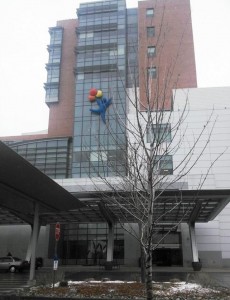
Sophia’s sporting shades after smoking the eye appointment. No hemorrhaging behind the eye and appears to have no vision damage. First of many follow ups and doing well.
Update January 17 – Sophia’s mother Athena said the Dr’s told her she will be in the clear by the end of February and can lead a totally normal life including roller derby and mutton busting.

The family wants to thank everyone who donated to the fund, your support and concern was appreciated.
In the December Issue of Western Horseman, author and photographer Jennifer Denison wrote a very interesting piece about one of the two remaining Pack Strings run by the US forest service.
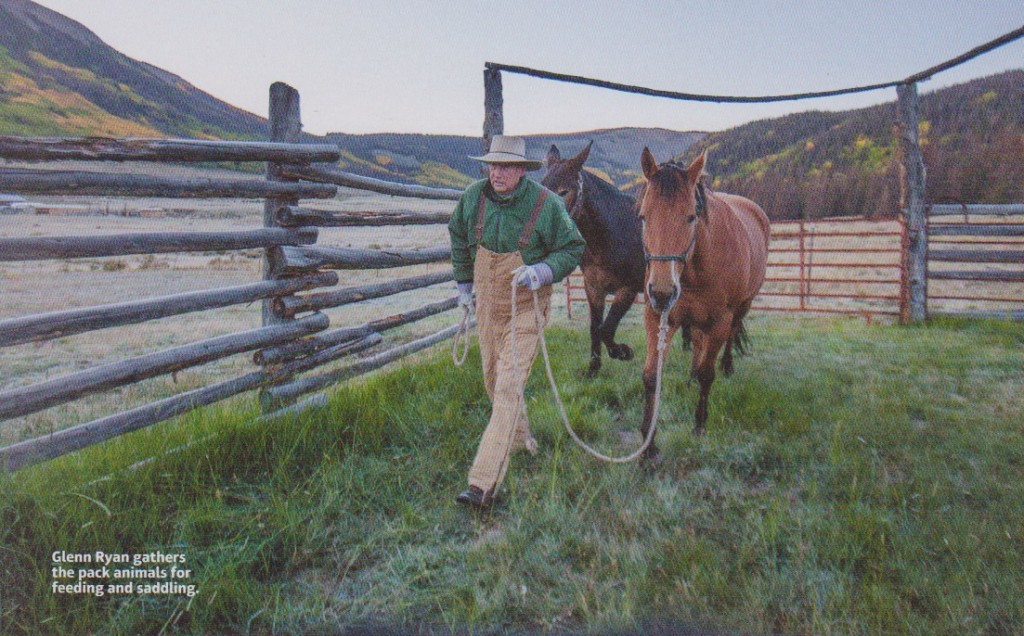 The South Platte Ranger District is home to the Rocky Mountain Specialty Pack String based at the AG Ranch in Shawnee, Colorado. Horses and mules based out of this station still ply trails and aid their packers in teaching lessons on horsemanship, packing and low impact techniques for backcountry use. The packers of the Rocky Mountain Specialty Pack String provide specialty packing and educational outreach throughout the Rocky Mountain Region.
The South Platte Ranger District is home to the Rocky Mountain Specialty Pack String based at the AG Ranch in Shawnee, Colorado. Horses and mules based out of this station still ply trails and aid their packers in teaching lessons on horsemanship, packing and low impact techniques for backcountry use. The packers of the Rocky Mountain Specialty Pack String provide specialty packing and educational outreach throughout the Rocky Mountain Region.

The Rocky Mountain Region Specialty Pack String consists of eleven highly trained pack mules and two saddle horses along with their equipment and tack. Working as two mule strings, the pack string uses special packing equipment such as gravel bags, lumber racks and swivel bunks to carry loads into work sites. Able to be utilized anywhere within the United States, the RMRSPS uses two semi-tractors with 27 foot trailers to haul the mule teams.
The pack string supports a wide variety of projects on the national forests, including hauling materials and gear to support Forest Service and volunteer trail crews, assisting in building bridges and other structures, packing sand or gravel for trail maintenance and reconstruction, loading timbers, hauling junk out of backcountry areas and hauling fish to stock remote streams and lakes.The pack string is authorized two packers – a lead packer and an assistant – to accompany the string to shoe, pack, lead and care for the livestock. In addition to scheduling work to support on-ground projects, the packers also conduct a variety of classes such as packing and “leave no trace” training, as well as providing educational outreach presentations to the public about the pack string, its history, capabilities and uses. Finally, the packers and their mules support a variety of community events, such as parades, rodeos and fairs.
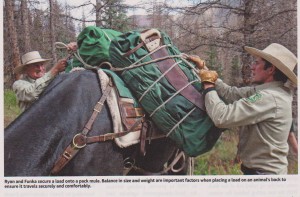 Packing a mule string … some history & background
Packing a mule string … some history & background
Pack strings are valuable tools in managing the 191 million acres which make up the national forests, America’s Great Outdoors. These lands were set aside over 100 years ago to provide for the needs of the American people in ways that also protect the environment.
Today, while there are numerous smaller mule teams serving the wilderness needs of individual forests, there are only two full regional specialty pack strings serving U.S. Forest Service needs throughout multiple States: (1) the Rocky Mountain Region Specialty Pack String (Region 2), supporting forests in Colorado, Eastern Wyoming, Nebraska, Kansas and South Dakota; and (2) the Northern Region Pack Train (Region 1), serving Montana, Northern Idaho, North Dakota and Northwestern South Dakota.
Mules in the Forest Service
Cowboys, trappers and woodsmen–outdoorsmen of every variety–filled the early forest ranger ranks. A good pack animal was an equal partner in protecting the forest reserves from timber, theft and fire. Often, that animal was a mule. Mules were preferred because they possess intelligence, agility and stamina. It was only a matter of time before several pack mules were tied together, creating a working pack string. These working strings became lifelines to the crews who fought fires, carved trails, built fire towers and bridged rivers in the backcountry.
Jennifer Denisons Story in Western Horsemen / Glenn Ryan thought on use of pack string
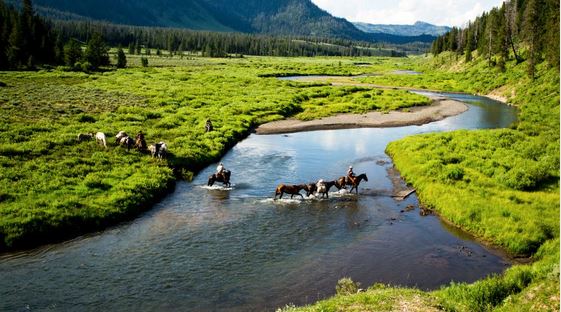
3000 miles, 12 horses, 5 states, 4 men, 1 goal: to complete a 6-‐month journey that was once a reality for the western frontiersman and still stirs in the human spirit. UNBRANDED follows four young men as they take on a monumental challenge that will change them forever.
Having recently graduated from Texas A&M, Ben Masters, Jonny Fitzsimons, Ben Thamer and Thomas Glover are delaying their entry into the job market to embark on the adventure of a lifetime. Ben Masters’ dream is to ride horses through the great American west from Mexico to Canada. It took no time to convince his college buddies to go along with him. Each one begins the adventure with his own dreams to fulfill, knowing full well that hardships and hazards come with the territory. They’ll face unrelenting heat, freezing temperatures, hail and lightning storms, rattlesnakes, Grizzly bears, raging river crossings and high mountain passes buried in snow. We will travel with them as they blaze a trail through Arizona, Utah, Idaho, Wyoming and Montana. The backdrop for this incredible journey will be our majestic public lands, including the Grand Canyon, Yellowstone, and the Bob Marshall Wilderness Complex.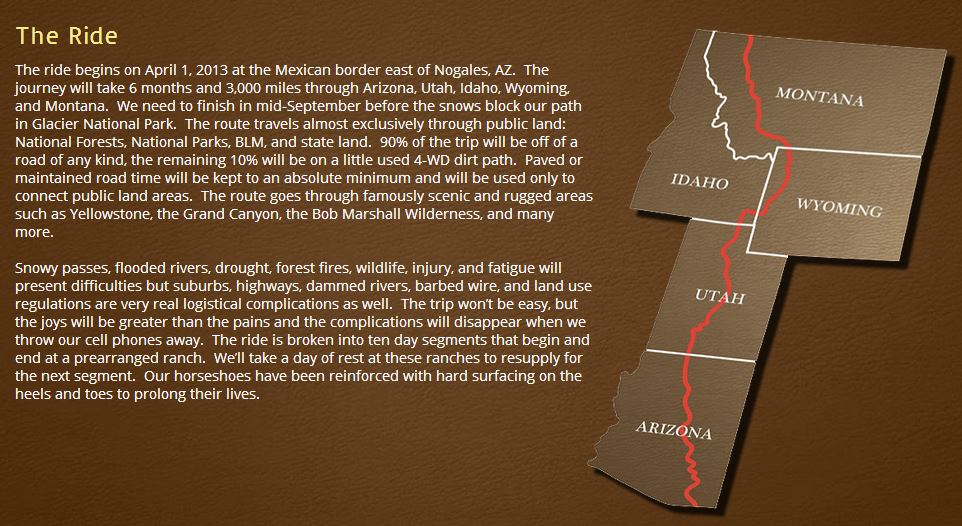 (Blog Entry) It has been a relatively smooth trip so far, and we have covered 2,000 miles of our planned 3,000 mile-plus trip. Currently, we are bedding down at Red Rock Ranch, a guest ranch on the Gros Ventre River just east of Jackson Hole, Wyoming. The sun sets over the Grand Teton Mountains here. Looking north, we’re about to go through one of the largest expanses of Wilderness in the lower 48. For the next 300 miles we will cross only two roads, see no power lines, very few people and go through some of the most incredible landscapes in the world.
(Blog Entry) It has been a relatively smooth trip so far, and we have covered 2,000 miles of our planned 3,000 mile-plus trip. Currently, we are bedding down at Red Rock Ranch, a guest ranch on the Gros Ventre River just east of Jackson Hole, Wyoming. The sun sets over the Grand Teton Mountains here. Looking north, we’re about to go through one of the largest expanses of Wilderness in the lower 48. For the next 300 miles we will cross only two roads, see no power lines, very few people and go through some of the most incredible landscapes in the world.
Our route will take us through the Bridger-Teton National Forests, the Teton Wilderness, Yellowstone National Park, Gallatin National Forest and the Absaroka-Beartooth Wilderness. We’ll pass Hawk’s Rest—the furthest point from a road in the lower 48 at 33 miles—Yellowstone Lake, dozens of thermal hotspots, hundreds of bison, Two Ocean Pass—the only place where water splits to go to the Pacific and to the Atlantic—and arguably the best Cutthroat Trout fly fishing in North America. Excited is an understatement, this is the jewel of the trip! Read the Blog
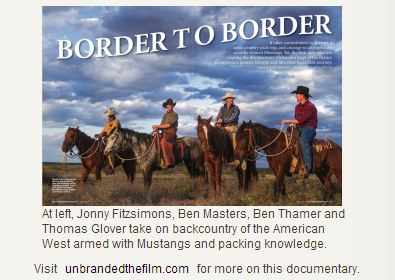
You don’t have to own your own horse or even be a frequent trail rider to recognize the importance of conservation of horse trails. Learn how you can become involved to help protect your local riding trails in a quickly modernizing world.
by Jocelyn Pierce
Now more than ever, horse trails need support to remain accessible for the public to enjoy them. An overburdened Forest Service is unable to maintain all the recreational trails available to the public, hindering equestrians from accessing many riding trails. Horses and use of the horse are a tradition in United States culture and history that must be preserved for future generations. Only by creating an awareness of the importance of our riding trails and the danger they are facing can we have an impact on the American public and land management agencies.
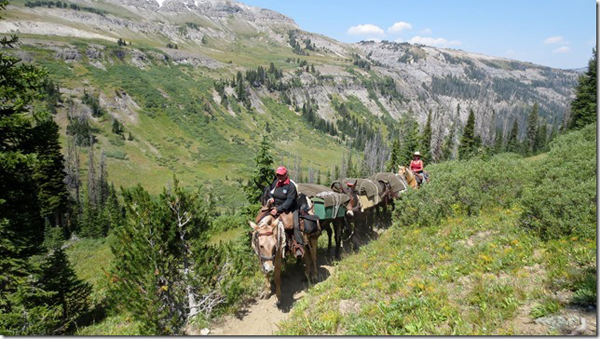
There are currently 155 national forests in the United States, with over 158,000 miles of recreational trails for horseback riders, hikers, bicyclists, and others to use. That’s roughly six times around the globe at the equator. With all those miles of trails, it’s difficult for the Forest Service to maintain all of them. The Government Accountability Office completed a study on national forest maintenance and found in 2012 only 37 percent of their 158,000 miles of trails had some level of maintenance performed and only one-quarter met the Forest Service’s standards. The Forest Service estimated their trail maintenance backlog to be $314 million in 2012.
Dennis Dailey has been involved in wilderness management for 40 years, and has seen a dramatic shift in the way trails are maintained since he began his career. Dailey worked for the Forest Service, and for Back Country Horsemen as Wilderness Advisor. He has an expert’s understanding of trail conditions. Dailey explains wilderness areas have seen much neglect over the last 60 years and some trails haven’t even been touched in ten years.
Adhesion – ad·he·sion – A condition in which bodily tissues that are normally separate grow together. A
fibrous band of scar tissue that binds together normally separate anatomical structures.
Amniotic Sac – am·ni·o tic – A thin, tough, membranous sac that encloses the embryo or fetus of a
mammal, bird, or reptile. It is filled with a serous fluid in which the embryo is suspended.
Avascular necrotic bone – a·vas·cu·lar – ne·cro·tic – Not associated with or supplied by blood vessels. – Death
of cells or tissues through injury or disease, especially in a localized area of the body. Failure of tissues to
adhere correctly to the bone.
Catastrophic – cat·a·stroph·ic -Involving or resulting in substantial, often ruinous medical expense: a
catastrophic illness.
Suture – su·ture – The fine thread or other material used surgically to close a wound or join tissues.
Cellulitis – cel·lu·li·tis – A spreading inflammation of subcutaneous or connective tissue.
Debride – To remove debris, non-beneficial tissue, etc.
De-gloving – The peeling away of the skin and subcutaneous layer in an injury.
Epithelial border – ep·i·the·li·al – Membranous tissue composed of one or more layers of cells separated by
very little intercellular substance and forming the covering of most internal and external surfaces of the
body and its organs. The epithelial border is this tissue development along the outer edge of a wound.
Granulation bed – gran·u·la·tion – Small, fleshy, beadlike protuberances, consisting of outgrowths of new
capillaries, on the surface of a wound that is healing. Also called granulation tissue.
Laceration – lac·er·a·tion – A jagged wound or cut.
Lamina – lam·i·na – A thin scalelike or platelike structure, as one of the thin layers of sensitive vascular
tissue in the hoof of a horse
Macrophage – mac·ro·phage – Any of the large phagocytic cells of the reticuloendothelial system.
Neutrophil – neu·tro·phil – A neutrophil cell, especially an abundant type of granular white blood cell that
is highly destructive of microorganisms
Occlusive – oc·clu sive – To cause to become closed; obstruct: occlude an artery. To prevent the passage of:
occlude light; occlude the flow of blood. Chemistry To absorb or adsorb and retain (a substance).
Placental tissue – pla·cen·tal – A membranous vascular organ that develops in female mammals during
pregnancy, lining the uterine wall and partially enveloping the fetus, to which it is attached by the
umbilical cord. Following birth, the placenta is expelled.
Purulent – pu·ru·lent – Containing, discharging, or causing the production of pus: a purulent infection.
Purulent discharge.
Viable – vi·a·ble – Capable of living, developing, or germinating under favorable conditions.
Dr. David G. Jolly, DVM stepaheadfarm@yahoo.com – (501) 844-5050
Partnering with the Bass Lake Ranger District, the Sierra Freepackers Chapter of Back Country Horsemen of California repaired a section of the Spring Cove Trail at Bass Lake in the Sierra National Forest. Their goal was to bring it up to acceptable standards by widening the trail, which required blasting out some rock that made the trail unsafe for horses. 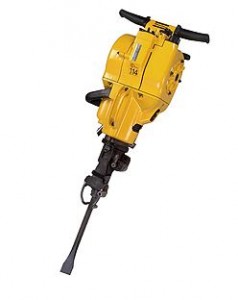
The Sierra Freepackers used mules to pack in a variety of equipment needed for the project including a specialized pionjar drill, Boulder Busters, and hand tools. The pionjar is a versatile gas powered tool used to drill holes in the rock.

